
Preview of SHRM23 in Las Vegas Mental Health in the Workplace Register for March 2024 HR Conference Cruise TM www.HRProfessionalsMagazine.com Volume 13 : Issue 5 Sales Compensation Design Yvonne Thomas, SHRM-CP Director of Alabama SHRM 2022 Annual EEOC Performance Report
Is Your Background Screening Partner Missing the Human Element?

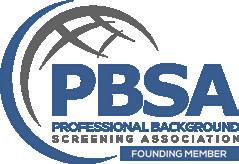













It’s easy for vendors to rely on technology solutions and neglect customer service. Not with Data Facts. Our foundation is built on technology-driven information for people, about people, by people. In addition to our innovative technology, we employ highly trained sta to assist you with every need, and o er live chat on our website supported by real team members. Choose the partner who puts your needs first by o ering a dedicated approach to serving their clients...because you deserve a better experience.
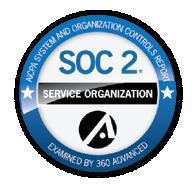


100% US-Based Support Fast & Accurate Results 98.7% Client Retention Rating
SavetheDate!HRConferenceCruise!
Miami, Florida | Labadee, Haiti | Falmouth, Jamaica Explorer of the Seas


HRCruise.com
Early Registration is open - Use the QR Code


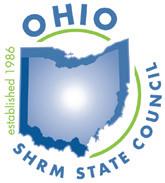
Secure your registration with a $50 Deposit by using FRIENDOFCYNTHIA at checkout.
$599 Conference Registration price
$100 in On Board Credit per stateroom
Early registration ends 5/31/23
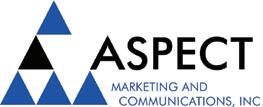

We’ll invoice you for the balance (registration and stateroom) payable 12/15/23
Stateroom Pricing (per person/double occupancy):
March 3-8, 2024 Ocean View with balcony
$ 599 $ 709 $ 659 $ 819 $1069
2023 2023
Join


98% of employers said they would hire another WGU

www.HRProfessionalsMagazine.com
Contact HR Professionals Magazine:
To submit a letter to the editor, suggest an idea for an article, notify us of a special event, promotion, announcement, new product or service, or obtain information on becoming a contributor, visit our website at www.hrprofessionalsmagazine.com. We do not accept unsolicited manuscripts or articles. All manuscripts and photos must be submitted by email to Cynthia@hrprosmagazine.com. Editorial content does not necessarily reflect the opinions of the publisher, nor can the publisher be held responsible for errors.
HR Professionals Magazine is published every month, 12 times a year by the Thompson HR Firm, LLC. Reproduction of any photographs, articles, artwork or copy prepared by the magazine or the contributors is strictly prohibited without prior written permission of the Publisher. All information is deemed to be reliable, but not guaranteed to be accurate, and subject to change without notice. HR Professionals Magazine, its contributors or advertisers within are not responsible for misinformation, misprints, omissions or typographical errors.
©2023 The Thompson HR Firm, LLC | This publication is pledged to the spirit and letter of Equal Opportunity Law. The following is general educational information only. It is not legal advice. You need to consult with legal counsel regarding all employment law matters. This information is subject to change without notice.
37 Save 20% on HRCI Courses in 2023 with Code HRMAG23



38 Disrupt HR in Memphis June 8
43 University of Illinois School of Labor & Employment Relations
48 WGU – Invest in Your Most Important Asset: PEOPLE

SHRM Conferences
Update
3 Register Today for the March 2024 HR Conference Cruise by 5/31/23!

28 Highlights from the 2023 SHRM Talent Conference in Orlando April 16-19
30 Register Today for SHRM23 in Las Vegas June 11-14
39 Register Today for the 2023 Tennessee SHRM Conference in Chattanooga September 20-22
40 Highlights from the 2023 ARSHRM ELLA Conference in Little Rock April 13-14
44 Highlights from the SHRM-Memphis Legal Conference April 18
June 2023 Issue features the 2023 SHRM Conference in Las Vegas plus the ALSHRM Conference at Perdido Bay and the West Tennessee SHRM Conference in Jackson – and updates on Employment Law and Employee Benefits.
Deadline to reserve space May 15
Bringing Human Resources & Management Expertise to You
our monthly webinars to
SHRM and HRCI recertification credits.
earn
graduate. Editor Cynthia Y. Thompson,
Publisher The Thompson HR Firm, LLC Art Direction Park Avenue Design Marketing and Social Media Specialist Julie Nagem Photographer Charles B. Thompson Webmaster Leo Dimilo Contributing Writers Alexander Alonso William Brown Joseline Castanos Harvey Deutschendorf Amy Shabacker Dufrane Ashley Dugger G. Gerard Jabaley John Hawkins Ken Joyner Sheila Kaira Tim Keck Kisha Moliere Cliff Sandsmark Yvonne Thomas James V. Thompson Cristie Upshaw Travis Features 5 note from the editor 6 Profile: Yvonne Thomas, SHRM-CP, Director of Alabama SHRM 7 Welcome to Alabama SHRM’s 2023 Annual State Conference and Perdido Beach! 10 Talking Taboo Chapter 6 – Race, Religion, Ethnicity, and Nationality 42 NOARK Wage & Benefits Survey Talent Management and Recruiting 2 Is Your Background Screening Partner Missing the Human Element? 8 Mental Health in the Workplace: It’s About Time! 12 Vending Machines Do Not Impact Employee Morale –Not So Fast My Friends! 13 Get Your 500 Free $10 Gift Cards for Your Employees from Advantage Refreshments 14 Sales Compensation Design – Where to Begin 15 JER HR Group – Helping You Bridge the Gap Between People, Work, and Play 18 How Employers Can Sniff Out Resume Lies 19 New Regulations Mean New Compliance Problems – Join SHRM Today! 20 Warning Signs for Workplace Violence 22 Dispelling the 5 Biggest Earned Wages Access Myths 23 Improve Employee Retention with DailyPay 46 How to Deal with Difficult Emotions at Work Employee Benefits 16 Tennessee Employers Face an Unhealthy Labor Pool 17 HealthCare TN Inaugural Statewide Conference at Belmont University in Nashville June 21 24 How Much “Tech” is Your Ben Admin Technology Solution Really Using?
Transform Your Employee Benefits from an Expense to a Competitive Advantage 34 The Benefits of Direct Primary Care for Employers 47 QualChoice Health Insurance – The Right Choice Employment Law 26 Autism Spectrum Disorder and the ADA 27 The Strength of Experience – Rainey, Kizer, Reviere & Bell PLC 32 2022 Annual EEOC Performance Report 33 Solving Problems for Business and Employers –Wimberly Lawson Top Educational Programs for HR Professionals 9 SHRM eLearning | SHRM on Demand 21 Safehaven Security Life-Saving Training Programs
MBA, SHRM-SCP, SPHR
25
Value
Certifications
36 The
of
4 www.HRProfessionalsMagazine.com
Spring is finally here! The SHRM spring conferences are in full “swing,” and we are excited to bring you highlights of some of the top conferences we covered during April. You will find the highlights from the 2023 ARSHRM ELLA (Employment Law and Legislative Affairs) Conference in Little Rock April 13-14. The mock trial was as amusing as it was educational. We have highlights from the 2023 SHRM Talent Conference in Orlando April 16-19. We also have the highlights from my hometown chapter, the 2023 SHRMMemphis Legal Conference, which was the best one ever! This conference was also virtual and featured the top legal minds in employment law in the city. Hat’s off to the talented SHRM leadership who made all these conferences happen.
It's an honor to feature Yvonne Thomas, SHRM-CP, Director of the 2023 Alabama SHRM State Council on our cover. You can read her exciting career profile in human resource management on Page 6. We are looking forward to seeing our Alabama friends May 15-17 at Perdido Beach! This is always a fun time as we get to visit our grands in Birmingham. I just can’t resist sharing this photo with you.

Closer to home, we will be in Jackson for the 14th Annual West Tennessee Human Resources & Employment Law Spring Conference May 10 at the Union University Carl Grant Event Center. This event is in coordination with our friends at the law firm of Rainey, Kizer, Reviere & Bell, P.L.C. We will have highlights from both of these excellent conferences in our June issue. We are looking forward to seeing you in Las Vegas for SHRM23! What a lineup of speakers they have for us this year! You can earn up to 28 SHRM PDCs! We have a preview of this fantastic conference on Page 30-31. Register today!

Have you registered for the March 3-8, 2024, HR Conference Cruise? This is an unforgettable experience that you do not want to miss! We are honored to be the official media sponsor for these cruises. This is a 5-night cruise on the Explorer of the Seas beginning in Miami sailing to the island of Labadee off the coast of Haiti and Falmouth, Jamaica. You will earn HRCI Business Credits and SHRM PDCs. Make your $50 deposit by May 31 to secure your spot. You will be invoiced for the balance with payment due by 12/15/2023. What a deal! Go to HRCruise.com and use Promo Code: FriendofCynthia. See Page 3 for more information.
We have some excellent articles for you in this issue covering all the hot topics in our profession. May is Mental Health Awareness month, and WGU has contributed an excellent article on mental health in the workplace on Page 8. See Page 13 to get your free 500 $10 gift cards for your employees from Advantage Refreshments. JER HR Group has provided an article on a very hot topic, “Sales Commission Design” – Where to Begin,” on Page 14. Another hot topic is about dispelling the 5 biggest earned wages access myths by DailyPay. There are many more timely articles in our May issue that you don’t want to miss!
Watch your email for our May webinars to help you earn lots of SHRM and HRCI recertification credits! Save the date - May 25 for my next webinar sponsored by Data Facts!
cynthia@hrprosmagazine.com @cythomps

a note from the editor
5 www.HRProfessionalsMagazine.com
(L-R) Sissy, Bo, and Tucker
Yvonne THOMAS
Yvonne Thomas, SHRM-CP Director of Alabama SHRM
Yvonne Thomas is the 2023/2024 Director of Alabama SHRM (ALSHRM) as well as the Chief Human Resources Officer for SEA Wire and Cable Inc in Madison, AL. Yvonne has held the SPHR certification and currently has SHRM-CP certification and People Analytics Specialty Credential. She has also held a CHHR (Certified Hospitality Human Resources) and is a John Maxwell Certified Trainer and Coach. Yvonne has 40+ years in Human Resources management in the hospitality, retail, construction, and manufacturing industries. As CHRO at SEA Wire and Cable, Yvonne oversees all aspects of human resources management and provides leadership development, workforce strategy, and a focus on the culture as the company continues to grow.

Yvonne started her career in 1982 at the Opryland Hotel in Nashville, TN as a Personnel Clerk at the age of 20. She was attending Western Kentucky University to become a medical secretary. She ran out of money, support, and resources and had to quit school. Yvonne left Opryland Hotel and went to work for Holiday Inns, Inc. in Nashville. She moved up the ladder from Personnel Assistant to Personnel Manager and Director of Human Resources. Yvonne moved to Huntsville, AL in 1990. She eventually went back to school and graduated from Athens State University with a Bachelor of Business Administration at the age of 38 while raising three boys and working full-time.
Yvonne has been in involved in ASPA (American Society of Personnel Administration) which transitioned to SHRM in 1989 for more than 40 years. Yvonne was Secretary for Baldwin County SHRM, the VP – Membership of Shoals SHRM, and President of Shoals SHRM. She had been the Volunteer Coordinator for the ALSHRM state conference for four years and the Director-Elect for three years before becoming Director in January 2023.
on the cover
6 www.HRProfessionalsMagazine.com
Welcome to Alabama SHRM’s 2023 Annual State Conference and Perdido Beach!
We are excited you have chosen to attend this conference and our hope is that you will leave here with the knowledge, tools, and confidence that you can implement to advance yourself and your organization. Be sure to engage in the sessions, make new contacts, and visit our vendor booths for some great products that will make your job easier!
We have some excellent speakers who will be addressing relevant and current workplace issues such as conducting workplace investigations, people practice innovations, unconscious bias, cultivating culture, compensation and benefits and many more! In addition, we have some fun time scheduled at the end of each day! All I can say is I hope you brought your dancing shoes!
Planning and organizing a state conference is no easy feat and takes a lot of volunteer time. I’d like to recognize and thank the Conference Committee:
Brandi Ingram, Conference Chair
Rena Ramsey, Co-Director of Programs
Kimberly Robinson, Co-Director of Programs
Andrea Lewis, Conference Assistant Extraordinaire
Michelle Mickle, Volunteer Coordinator
Jillian Miles Massey, Conference Advisor
Joshua Bracken, Finance Director
Special Thank You to Jack Eyer, Chapter Management Professional
Thank you for joining us at the beach to learn, laugh, and launch!
Mark your calendars for our 2nd Annual Employment Law and Compliance Conference at the Renaissance Montgomery Hotel and Spa in Montgomery, Alabama on September 18th – 20th! Registration will open soon!
Please let us know if there is anything we can do to make your conference experience everything you expected! You will receive a survey some time after the conference. Please watch your inbox for it and respond so we can know what you liked and what might have been a little lacking.
From the bottom of my heart, thank you for putting your confidence in Alabama SHRM to provide you with relevant information and education. Enjoy the conference!

Sincerely,
Yvonne Thomas ALSHRM State Director

7 www.HRProfessionalsMagazine.com
Mental Health in the Workplace: It’s About Time!

 By JOSELINE CASTAÑOS and ASHLEY DUGGER
By JOSELINE CASTAÑOS and ASHLEY DUGGER
You’ve probably heard that May is Mental Health Awareness Month. But did you know that it was established in 1949 by Mental Health America? For over 70 years, the United States has highlighted May as Mental Health Awareness Month to promote the importance of mental health in our lives, increase awareness and access to resources, reduce stigma, and celebrate recovery.
Despite many efforts, stigma remains prevalent in our society. There is still a fear surrounding the topic. There is hesitation to talk about the subject, ask questions, or refer individuals to resources. One area in much need of improvement is the workplace. We spend many of our waking hours at work. Though we may experience job satisfaction and a call to our mission at work, it is also where we encounter challenges, deal with many individuals and personalities, and find stressors. Yet, work is the least likely place where we will hear about mental health and well-being, other than the yearly campaign highlighting mental health awareness month.
Employers may want to think twice about this hands-off approach. After all, an open and safe space to address mental health and to connect employees with resources benefits not only the individuals themselves but companies as well. Employee satisfaction and productivity increase when employees feel safe, appreciated, and cared for. Absenteeism and presenteeism decrease, and employee longevity in the company reduces turnover. Everyone wins!
SHRM recently published findings from the Workforce Institute at UKG that noted managers and leaders can have a more significant impact on employee mental health than their healthcare professionals or therapists, and that in their research around 60 percent of employees surveyed (2,200 employees and 1,200 leaders spanning 10 different countries) noted work/their job was considered to be “the most significant factor in their mental health”. Perhaps most concerning from this research?
That in this one survey alone, one out of every five respondents noted the impact from their day to day work on their mental health is negative, resulting in burnout, exhaustion, increasingly heavy workloads, and that one-third of respondents also said they hardly ever, or even never, discussed these issues with their leaders.
As we begin to hear more on the research and impact that issues like overwhelming workload, toxic culture, lack of boundaries, and trying to juggle personal and professional responsi-
bilities can lead to declines in mental health, organizations must take notice. We never know the full stories and struggles our employees are dealing with outside of the workplace – but we can all play a part in building and nurturing an organizational culture that puts a positive culture, creation and maintenance of psychological and physical safety, and life balance and support at the top of the priority list. Employees today are, more than ever, seeking professional environments where they are treated positively. As companies struggle in today’s labor market to both recruit and retain strong talent, it isn’t always about the salary, benefits, or remote working opportunities – how people are treated day to day, if they have an empathetic and supportive leader and team, and if your colleagues treat you with decency, respect, kindness, and willingness to collaborate may matter just as much, if not more, as traditional working rewards for many employees.
Within HR teams especially, making the conversations around mental health support, discussions, and use of resources commonplace and without stigma or fear of lack of psychological safety, is incredibly important. So often HR can feel like an island – particularly for those on small, or even HR Department of One, teams. Who does HR turn to when they need a confidential partner to discuss mental health concerns with, just get some workplace support, or run a tough situation past a trusted partner? It can feel like a huge challenge in some cases, and when we speak with those in various HR roles this topic comes up quite regularly – who does HR go to when they need someone like HR to support them? Whether you are the sole HR manager for your organization, or part of a larger HR team, knowing how to support HR professionals’ mental health so that they can continue to strategically support business decisions and develop employees, should be top of mind. Encourage the development of mentoring relationships – not just in regard to career development mentoring, but also resiliency and adaptability mentoring. Share the research on how having a work best friend or trusted confidante in your network of other HR professionals to (appropriately and compliantly, of course!) benchmark decision making and obtain guidance, when needed, can impact the mental health of HR professionals. Make sure all HR employees know about, and feel comfortable using, resources like Employee Assistance Programs, mental health apps/subscriptions, and wellness initiatives that support mental health and help avoid burnout. Normalize using paid time off for mental, as well as physical, illness. Check in on those around you – you’d be surprised how often we hear “no one ever asks HR how they’re handling tough times, only how they’re planning to support the rest of the workforce”.
Companies must invest in resources to care for employees. Resources may include Employee Assistance Programs with several covered therapy sessions for difficulties they encounter.
Employers also have the opportunity to offer innovative technology-based solutions to manage well-being through apps/services like Calm, Headspace, Sonic Boom, etc. Another way to engage employees in well-being is through webinars with internal or external experts who can speak about prevention tools or managing stress and anxiety. Hopefully, these webinars have a set recurrence and more than just once a year for Mental Health Awareness Month. Employers should be intentional in communicating all the resources through announcements in meetings, emails, 1:1 meetings, and having a compilation of all resources in a one-stop-shop (SharePoint, Internal Webpage, etc.). The resources are often scattered, and employees cannot find them when they need them the most.
As individuals, we also have various resources available through organizations constantly working to raise awareness about mental health and provide access to resources. The Suicide Prevention Lifeline (988) is finally a reality. Individuals can call, text, or chat 24/7, either in English or Spanish. 988 allows us to connect with someone anytime in crisis to get proper help resources. The National Alliance on Mental Illness (NAMI) offers education, support, and advocacy through free classes, support groups, warm lines, and a hotline via phone or text: Lifeline 1-800-950-NAMI (6264), Text TALK to 741741. The Substance Abuse and Mental Health Services Administration offers a distress helpline 24/7 at 1-800-9855990. Finally, the American Foundation for Suicide Prevention reaffirms that You Are Not Alone. All these resources are available to individuals, and companies and HR personnel would serve employees well by promoting these organizations’ vital support.
Visit WGU at booth #4010 during the SHRM Annual Conference in Las Vegas this June and learn more about WGU and our new MSHRM launching in November!
Joseline Castaños, Ph.D. Associate Dean and Director for Management Programs joseline.castanos@wgu.edu www.WGU.edu
 Dr. Ashley Dugger, SHRM-CP Associate Dean and Director for Human Resource Management Programs ashley.dugger@wgu.edu www.WGU.edu
Dr. Ashley Dugger, SHRM-CP Associate Dean and Director for Human Resource Management Programs ashley.dugger@wgu.edu www.WGU.edu

8 www.HRProfessionalsMagazine.com

new skills to take back to the o ce and reach new heights in your career! 9 www.HRProfessionalsMagazine.com
Gain
We are honored to present our sixth installment of Talking
Taboo

Making the Most of Polarizing Discussions at Work
BY ALEXANDER ALONSO, PHD, SHRM-SCP ALEX IS SHRM’S CHIEF KNOWLEDGE OFFICER.
Chapter 6
Race, Religion, Ethnicity, and Nationality
There’s a reason our elders advised caution when discussing race, religion, national origin, and similarly tricky and treacherous topics. They continue to pose challenges for employers, whether the spark for debate among employees originates inside or outside the workplace. Difficult, often emotionally charged conversations feature prominently in these stories, whose outcomes were at opposite ends of the scale. Many address questions that are also intrinsically political, such as immigration, civil wars, cultural bias, and the Black Lives Matter movement.
EMOTIONS OVERWHELM BUT LEAD TO ENLIGHTENMENT Summary
A street demonstration against police brutality takes place in front of an office building. Employees watch from inside and make ignorant, insensitive comments. The sole Black employee in the group attempts to educate them, but eventually she overreacts. She is mortified but has opened their eyes and minds. This incident, though minor, has an excellent resolution.
10 www.HRProfessionalsMagazine.com
Yet another unarmed Black person was killed by police, which was highlighted once more on the news and social media. Demonstrators and protesters started to hold small rallies every day on the boulevard where my office is located. One day, a crowd of over a thousand people gathered directly in front of the building to rally against police violence and to demand justice.
I work on the tenth floor of the building. My coworkers gathered at the window behind my desk, looking down at the rally. There were three White people, a Filipino-American person, and someone who was born in India, among them my supervisor and my subordinate. As the only Black woman on my entire floor, I knew right away I was entering a precarious situation.
Their chatter began: “Why are they there?” “This is ridiculous.” “The police were doing their jobs.” “I saw the video, and he didn’t do what he was told.” I felt a tightness in my throat as I listened to my coworkers revealing their ignorance about an issue of great concern to Black people.
I tried to keep away from the window, stay quiet, and get back to work. But as the talk continued, I could no longer ignore it. If I remained quiet, I’d be the kind of person I despise. I had to respond; I had to provide a Black point of view.
I knew their comments stemmed from inherent bias, which most people aren’t even aware of. They were unconsciously exposing their biases out loud. But how would they feel if I pointed this out to them? Presenting people with uncomfortable topics and ideas is awkward, and I had to continue working with them.
I thought about my upbringing. I was taught that it was more important to educate someone about a bad situation than to leave it be. If I could correct what my coworkers were saying, I could dispel their false rhetoric and possibly change their minds. Changing or opening even one person’s mind was what mattered.
Defending myself and my culture became that moment’s priority, even though I was at work. I had no choice but to speak up. But I also knew I had to do so in a professional and respectful manner that didn’t compromise my role in the company or with my colleagues (even though their comments were neither professional nor respectful).
Read the entire Chapter 6 at www.hrprofessionalsmagazine.com
11 www.HRProfessionalsMagazine.com
Vending Machines Do Not Impact Employee Morale, Productivity and The Workplace Environment… Not So Fast My Friends!!!!!!!!!!!!!!!!!!!!!!!!!
By GARY JOYNER
That statement is about as far from being the truth as the earth is from the sun. Since vending machines cost your company nothing, your vending company typically installs their vending machines at no charge in exchange for being able to offer their cold and hot drinks, snacks, and food items to your employees when they go on break, visit the breakroom, employee lounge, or cafeteria.
The level of service your current vending provider offers to your employees in many cases can and does have a direct effect on how their attitude. Poor service can turn a positive attitude into one in which your employees become angry and upset if the vending machines take their money and they do not get the product they just paid for.
Our research and first-hand experience in working with literally hundreds of customers reveals that the overwhelming number of those clients have the HR Department handle refunds when their vending machines take employees’ money, and they must handle upset employees who feel they have been ripped off again and again.
Here are just four examples of how a vending machine has cost team members their job, and the company must go through the costly and time-consuming process of hiring someone to replace an employee who was terminated due to their behavior over the problem vending machines.
USA Today News/ the Des Moines Register Feb 20, 2014 - “Man fired after using forklift to free stuck candy bar-it’s a familiar tableau: A vending machine candy bar dangles on a spiral hook, tantalizingly out of reach and refusing to drop. For most of us, that mini drama usually ends in defeat. But not for Robert McKevitt of Spirit Lake whose victory over an uncooperative vending machine ultimately cost him his job.
McKevitt used an 8,000-pound forklift in attempt to retrieve a Twix candy bar from a vending machine- the Iowa National Guardsman was fired five days after the incident – a judge denied his unemployment benefits claim.
ABC7 Eyewitness News in Chicago on Oct 11, 2012 - Video shows a North Carolina woman setting a vending machine on fire- surveillance video shows Debra Johnson setting a soda machine on fire after it ate up her dollar. She is then seen lighting a newspaper on fire and shoving it into the machine. She is now facing two felony charges.
CBS2 Chicago on March 1, 2012 - Workers charged for shaking snacks out of vending machine- Some Southwest suburban workers who got the munchies are now in trouble with the law. A picture of the snack machine where the items were stolen has a post-it note on the front of the machine. It is not unusual for people to leave the vending company a note about losing their money in the machines. As WBBM News Radio Regine Schlesinger reports, the eight workers were on the night shift between 6 PM and midnight February 21 at an unspecified Bolingbrook business in the 800 block of Remington Boulevard.
Buzzfeed News.com June 21, 2017 - a bunch of CIA contractors got fired for stealing snacks from vending machines- the thefts took place in the Fall of 2012 and continued through March 2013 according to a declassified Office of Inspector General Report from October 2013.
Needless to say, the amount of money it cost these various companies to replace all these employees must be in the tens of thousands of dollars, and the HR department would not have to go through all of the hassle if their vending company had “state of the art” electronic merchandisers equipped with guaranteed product delivery systems.
These four examples most likely are just the tip of the iceberg to HR departments having to be the go-between when it comes to unhappy employees’ complaints with vending machine issues.
Have any of your staff and employees ever said, “Why doesn’t the vending company ask us what we want in our vending machines?” The typical answer most vending machine route personnel says, “We put in what our boss says to put in.” If this sounds like what you may have heard on more than one occasion from your present vending provider, maybe you should consider a vending company who periodically offers product survey forms that allow your team members to have a loud voice as to what they want to purchase.
There can be no doubt that a vending company can and does have a dramatic influence on the attitude of your employees and their job performance. Since vending service for your employees cost your company zero-nada-zilch-nothing, in most cases, it is almost never at the top of senior management’s “to do list.” However, it is very important to those employees who have been heard to say, “The company wants the best computers, software, work environment, health care, and other benefits that impact our well-being. But they really don’t seem to give a darn about the vending machines that we use daily.”
HR professionals are looking straight down the “barrel” of a golden opportunity to increase employee morale, productivity, and engagement when you choose Advantage Refreshments as your employee refreshment provider.
If your current vending company does not do things for your employees such as having “buy one get one free “ vending coupons, free $2-$5$10-$20-$50-and $100 bills give away in your vending machines, two for a dollar items ( even in today’s inflationary economy,) free scratchoff lottery tickets, and many other promotions designed to have a positive impact on your employees benefits, CALL GARY JOYNER ON HIS CELL PHONE AT 828-291-8323.

YOUR Employees WILL BE GLAD YOU DID!
12 www.HRProfessionalsMagazine.com



Call Gary Joyner at 828-291-8323 The HR department of every customer who is a SHRM member and HR Professionals Magazine subscriber will receive 500 $10 Advantage Refreshments Visa Gift Cards FREE that may be used to say thank you to an employee for a job well done, as part of a Welcome Aboard Package, or any way the HR Department chooses! Daytona has their 500… Indianapolis has their 500… Advantage Refreshments Has Our 500! 13 www.HRProfessionalsMagazine.com
Sales Compensation Design – Where to Begin
BY CLIFF SANDSMARK
It’s Martha’s first week on the job as a brand-new HR Director for a consumer goods company nestled in the Midwest. The VP of Sales called her into her office and wanted her to redesign the Sales Representative Commission Plan for her department. The VP isn’t happy with the current plan since she feels the reps are overpaid and gaming the plan. The program was never tested and consisted of a generous base salary plus a commission rate that is creating huge payouts on existing business with zero focus on obtaining new clients. Eager to make a good impression, she promised to get on it right away and have a recommendation by the end of the week. Anxiety set in when she acknowledged to herself that she is ‘the’ HR Department and only had the one class in Sales Compensation she took for her compensation certification. She located her class binder, dusted it off, and began her review as to how to design a sales incentive plan.
Her first task was to do fact-finding with the sales department: what are their sales goals, their ‘go to market’ strategy, the sales channels they use to deliver their product to the customer, etc.
She knew that compensation for the sales associate depends on the type of sales the job: would it be New Market Selling and Conversion Selling to new prospects, Fulfillment Selling which sells to Current Customers, or Penetration Selling to existing customers to offer additional goods and services the company has to offer? Each market will require a different type of sales role due to the amount of effort required to close the sale. She understood that selling to new, prospective customers is harder than selling to existing customers and compensation would be driven by the amount of effort required to win the sale.
She was familiar with the traditional Hunter and Farmer roles, selling to prospective customers vs. existing ones - sometimes known as Business Development Reps. Customer Service Reps service existing customers to ensure they are receiving their products and services. There may also be a position for Lead Generation which frees up the traditional hunter sales role to concentrate more on the actual selling process.
She had some survey resources to determine pay. With a major portion of sales compensation being ‘pay at risk,’ it is a practice to price the job for Total Target Cash Compensation (TTCC) rather than just focusing on the base only. TTCC clearly shows the actual market value of the role. Her next task would be to determine would it be salary only, commission only, or a combination of base salary and incentive (either commission or bonus or both).
It was then she remembered the sales compensation instructor for her certification class. He was an SVP for a nationally recognized sales consulting firm and had published several books on the topic. She remembers what he said like it was yesterday:
“Finding, defining, and measuring the point of persuasion is the focus of effective sales compensation design” (Cichelli, 2018). The point of persuasion is where the sales associate helps the customer make a buy decision where there is uncertainty. It is at that point we reward the sales associate.
Salary only is typically used for long sales cycles, where the time from initial contact to the final delivery of the product is 18 months or longer. Here one might use ‘milestones’ to create incentives at certain points of the project like receiving the LOA, contract signing, delivery/installation of the final product.
Straight commission is used for those products or services that are considered a ‘commodity’ where the sale of the product depends on the efforts of the salesperson and not on other external factors. In other words, factors such as brand awareness, company reputation, etc. are a minor influence on the decision to buy. Products sold through multilevel marketing programs as well as life insurance and real estate are sold with straight commission.
The most common arrangement is a mix of base salary and incentive pay. The amount of incentive is based on the amount of persuasion required by the salesperson to close the sale. For example, the decision to buy is influenced by the product’s uniqueness and has no other competitors, excellent brand name recognition, and the company’s reputation in the marketplace. Here the product can literally ‘sell itself’ with a little push by a sales professional who just writes the order. If this is the case, then a smaller percentage of incentive is used, and a 90/10 plan might be appropriate: 90% of the TTCC would be base salary and 10% incentive pay.
Products that have many competitors, competing brands, and would require more effort by the sales associate to book an order receive a higher percentage of incentive pay in relation to base salary. This could range from 80/20 to 50/50 plans – but it is recommended not to exceed 50/50 since it begins working closer to a straight incentive plan and increases the chance of losing control of the sales associate and their book of business.
The next step is to decide the types of measures that she’ll recommend. The use of proper measures will drive the desired behaviors and focus on those elements that indicate success. A measure should provide a clear ‘line of sight’ – which means those elements that the sales associate has control over and are strongly correlated to their individual payout. A successful plan has a maximum of three measures. Using more than three typically results in the sales associate losing focus on the measures that are important to the organization. Some common items used are unit measures (number of products sold), gross revenue, gross margin, number of new accounts, price management,
milestones achieved, etc. The important point to remember is, does the sales associate have control over the measure? For example, they can’t be incentivized for pricing goals if all product pricing is controlled by Finance.
For quantitative measures, they can be incentivized with a commission payout. A commission is a ‘percentage of’ the total cost. For example, a car salesman gets 10% of the sale price he negotiates with the customer. Some of these measures can be qualitative: Customer Satisfaction Scores for example. You want to reward associates with high Customer Satisfaction scores, you would use a bonus as part of their incentive plan. A bonus basically means, “if you achieve this goal, you will be paid $XXXX.” Back to our car salesman example: his manager tells him that if he sells 10 cars during the month, he will receive an additional bonus of $1,000 in addition to their commission earnings.

Once you’ve decided on your measures, you can also weigh them for importance. This helps the sales associate focus on those measures that are important to the organization. She has chosen three measures: price realization, number of units sold over last year, and customer service satisfaction. Since price relates directly to gross margin and with the ability to negotiate prices, Martha weighs this as 50% and the remaining two at 25% each. She also added a ‘hurdle’ where none of the measures will pay out until the goals for new units sold are reached.
After completing plan design, she will perform a simple ‘what if’ analysis and a ‘Who Gets Helped, Who Gets Hurt’ analysis. The ‘Who Gets Helped, Who Gets Hurt’ analysis takes last year’s sales data and plugs it into the new plan. When compared to the results of last year’s actual payouts, it is easy to see how the new plan will work, it’s impact on the sales force, and what the Compensation Cost of Sales will be for the upcoming plan year.
She presented the new plan and analysis to the VP of Sales, and it was approved for the next plan year. The final steps are to prepare a plan document which will cover who is eligible, how the plan works, how it pays out, when an incentive is considered ‘earned,’ payout of earnings under FMLA, employment termination, dispute resolution, etc. For the roll out she created an information campaign with a simple calculator to show how a rep will be paid under the plan at different levels of performance.
Martha can chalk this one up as a win, time for the next project.
csandsmark@jerhrgroup.com 14 www.HRProfessionalsMagazine.com
Clifford C. Sandsmark, CCP, CSCP, SHRM-SCP, SPHR Senior Consultant, Compensation Services JER HR Group

Tennessee Employers Face an Unhealthy Labor Pool
By CRISTIE TRAVIS
Unfortunately, Tennessee sits in the middle of the obesity, diabetes, and hypertension belts in the US -- a triple-threat to the health, productivity, competitiveness and economic vitality of our region. In Tennessee:
33% of adults have hypertension
· 13% of adults have diabetes
34%, 3 times the number of people diagnosed with diabetes, have pre-diabetes, and without lifestyle changes, most people with pre-diabetes will develop type 2 diabetes in 5-6 years. Hypertension and diabetes are strongly correlated co-morbidities. We know that:

Approximately 75% of people with diabetes also have hypertension. People with both hypertension and diabetes are four times as likely to develop heart disease as those without either.
Hypertension and diabetes are risk factors for cardiovascular disease, which accounts for one-third of all deaths in the US and costs that exceed $1 trillion per year.
72% of adult Tennesseans are overweight or obese, both of which are underlying drivers of pre-diabetes, diabetes, and hypertension.
These statistics make it clear that Tennessee employers face a significant challenge to improve the health and productivity of their workforces to remain competitive and achieve targeted business results.
What Should Employers Do?
The good news is that if employers take these two essential steps, they can start improving the health of their workforce.
Implement a Comprehensive Obesity Benefit Design: Addressing obesity, as an underlying cause of diabetes and cardiovascular disease, is an essential strategy to effectively manage employee health benefits.
HealthCareTN recommends a comprehensive, evidence-based obesity benefit design to reach as many employees as possible with approaches that will be successful for them. For example, for employees with pre-diabetes (and who may also have hypertension), the CDC’s National Diabetes Prevention Program

(National DPP) checks off the boxes for an effective lifestyle management offering:
· It is an evidence-based, effective lifestyle change program that helps fill a benefit offering for all your employees with pre-diabetes that are overweight or have obesity.
It can prevent or delay the onset of type 2 diabetes by 58%.
A three-year ROI of approximately $8,000 compared to a program cost of approximately $600.
Deploy Effective Condition Management Strategies: Employers should offer benefits and benefit programs that prevent or delay disease progression or downstream complications. For example, the St. Louis Area Business Health Coalition suggests:
Benefit Design Strategies
Provide no or low out-of-pocket costs for screening supplies such as blood pressure cuffs and glucose monitors.
Adopt the expanded pre-deductible coverage for medication and services for chronic conditions.
· Consider coverage for evidence-based disease management programs such as National DPP, diabetes self-management education, self-measured blood pressure.
Benefit Program Considerations
Offer programs to provide clinical oversight, care management, and medication adherence support.
Provide access to low or no-cost screening opportunities at the worksite, in the community, or through home test kits. Support employees getting connected to high performing in-network programs, services and providers through resources (such as navigation and/or transparency vendors) and decision-support tools/ information (such as provider recognition programs)
Can Employers Achieve Results?
The experience at Metro Nashville Public Schools (MNPS) shows the difference a strategic, comprehensive, evidence-based approach can make for employee health and for health benefit plan costs.
MNPS programs are built on the core belief that healthier employees are better employees. They focus on health and believe the cost savings will naturally flow. MNPS offers several
lifestyles change programs, including the National DPP, that meet the needs and preferences of a diverse workforce. Since implementing the National DPP in 2019, MNPS is:
Identifying more employees with pre-diabetes and identifying them earlier, allowing for earlier intervention to impact future outcomes.
Starting to see a downward trend in incidence of newly diagnosed diabetes.
Beginning to experience a reduction in health benefit plan costs overall and costs associated with diabetes.
How Can Employers Take the Next Step?
Consider no-cost pilots: Through a partnership with the Tennessee Department of Health, HealthCareTN is offering Tennessee employers no-cost pilots for the National DPP and a hypertension management program through Omada. Both 12-month pilots guide employees through lifestyle modifications and, for hypertension, medication therapy (if necessary), to reduce the risk of diabetes and cardiovascular disease. These pilots give employers the opportunity to “test drive” solutions and approaches and evaluate if they are appropriate for their workforce.
Attend “Re-Design for Value: Innovative Approaches for Chronic Conditions”: Learn more about effective approaches and get employer tools to prevent and manage chronic conditions from national and regional experts including CDC, healthcare leaders, and employers at HealthCareTN’s June 21 conference at Belmont University in Nashville, TN. In-person and virtual options are available. Learn more and register at https://bit.ly/3L5ROMo
For more information about the no-cost pilots, how you can join other Tennessee employers in peer networking about pre-diabetes, diabetes, and hypertension management, and registering for the June 21 conference, contact Phil Belcher at HCTN – pbelcher@hctnonevoice.org
About HealthCareTN
In January 2023, Knoxville, TN-based HealthCare 21 Business Coalition (HC21) and the Memphis Business Group on Health (MBGH) merged to create HealthCareTN, the state’s only employer-led, non-profit organization dedicated to employer members as they work to ensure high-quality, affordable healthcare and health benefits. HealthCareTN harnesses the rich legacy and strength of both previous organizations to drive meaningful, quality results across a broader statewide footprint. Joining together creates more impact with over 600,000 covered lives in Tennessee, more focus on the most critical issues impacting employers, and more collaboration as leading employers across the state network, share best practices, and offer different perspectives to address challenges.
Cristie Upshaw Travis Co-CEO, HealthCareTN ctravis@HCTNonevoice.org www.HCTNonevoice.org
16 www.HRProfessionalsMagazine.com



• • • hctnonevoice.org 17 www.HRProfessionalsMagazine.com
Omissions, Exaggerations, and Complete Fabrications: How Employers Can Sniff Out Resume Lies
 By JOHN HAWKINS
By JOHN HAWKINS
HR professionals must review resumes and applications for just about every new hire. While we’d like to tell you that fewer people are misrepresenting themselves to get a job, we’d be, well, lying if we said it.
The unfortunate fact is that some job seekers are still using subterfuge in various ways on their resumes and during their interviews. Employers must stay on their toes to ensure they’re getting the education, experience, and attitude they need out of a new hire.
Studying Up on the Most Common Resume Lies
In a recent survey, 55% of respondents said they lied at least once on their resume during their 2022 job search. (statistic source: https://standout-cv.com/usa/studyfake-job-references-resume-lies#how-many) Of these, 30% said they had never been caught.
What are the most common ways candidates misrepresent themselves?
• 17% of survey respondents reported using a fake reference. Directing employers to family friends, or even a fake reference service (that costs around $150) instead of their real employer is common.
• 55% said they lied about previous work experience.
• 43% lied about skills.
• 41% of respondents admitted lying about their college degree. Of these, 35% said they had a degree but lied about what subject it was in, 24% said they had a degree when they didn’t, and 10% lied about which college they attended.
Failing to recognize that your applicant is being less-than-honest can have damaging consequences for your company. If you hire a person who doesn’t have the experience, education, and skill sets they claim, they can underperform. Their lack of knowledge can damage customer relationships, frustrate your current employees, and, in some cases even tarnish your brand’s reputation.
How Employers Can Avoid Believing Dishonest Claims
In many cases, it’s challenging to find a new hire that offers the talent it takes to fill an open role. Employers may be tempted to
believe everything on their resumes just to get a position filled fast. This “blind trust” approach can cause big problems down the road.
Finding new hires that possess the know-how that’s required to do a good job is vital to your company’s productivity and growth. Instead of taking every applicant claim at face value, you should lay out and follow a strategy to catch half-truths, embellishments, and completely fake information.
Watch for conflicting information during the interview. Keeping candidates who are lying about their qualifications off the payroll is every employee’s responsibility. Each person who participates in the hiring and interviewing process needs to be educated on how to pinpoint the information that may be untrue.
Interviewers should closely review the resume before each interview and ask in-depth follow-up questions that correspond to job seeker claims. It’s a noteworthy red flag if the candidate can’t explain a process or is vague about their education or work experience.
Verify information with a background check
Independently checking an applicant’s claims is one of the most definitive ways to find the truth and know whether they deserve an employer’s trust. Instead of handling it in-house, it’s smart to hire an experienced third-party background screening vendor to run pre-employment checks on your potential hires. These are professionals who handle background screening requests every day. They know how to dig for and deliver information that will help you make good decisions.
Proactively create a background screening plan that you follow with every single hire, as this will keep you in compliance.
• Employment verification. If you want information about their previous work history, order an employment verification, which gives information like dates worked, titles, responsibilities, and more.
• Education verification. If a degree or certification is required for the job, ordering an education verification will tell you if the applicant attended a school, earned a degree, their major, and even their GPA.
Use job skill tests
Employers can require job applicants to showcase their abilities and skills through different types of testing. Depending on the position, employers may be able to use a standard skills test to see if they have the knowledge they claim. Or they can design a specific project that relates to the role. For example, someone who would be giving presentations in their position may be required to do a short one as part of their interview. In addition, a person who needs to be able to work with numbers could submit to a short project involving the type of work they’d be doing.
Job skills tests offer hiring managers firsthand evidence of the candidate’s skill set and knowledge. The results either back up or negate their resume claims.
Proper Planning Minimizes the Risk of Believing Resume Lies
It’s a disappointing reality that lying on resumes is still a popular practice. For every 10 resumes you review, 5 of them most likely contain some sort of fallacy. The good news is that employers can protect themselves from applicant misrepresentations with a little bit of forethought and effort.
The first step is knowing about the different ways job seekers may be trying to pull the wool over your eyes. From there, adding in-depth interviewing, background screening, and skills tests to your hiring process helps uncover untrue applicant claims.
By being confident in your hiring process, you can minimize the worry that you’ve hired someone who doesn’t offer the experience, education, and skills the job demands. This approach helps you find talent that can perform well and contribute to your company’s success.
John Hawkins, Senior National Account Executive Data Facts, Inc. JHawkins@datafacts.com www.datafacts.com


18 www.HRProfessionalsMagazine.com

NEW REGULATIONS MEAN NEW COMPLIANCE PROBLEMS Join SHRM and access resources to adhere to compliance requirements. shrm.org/comply Layoffs and Employee Rights
Laws Adhere to the provisions in the Worker Adjustment and Retraining Notification (WARN) Act when considering mass layoffs and plant closings. Understand how to protect sensitive information and comply with state and federal privacy laws. With SHRM membership, compliance doesn’t have to feel like a full-time job. 222847
Data Privacy and Security
WARNING SIGNS for Workplace Violence

The experts at SafeHaven Security Group, a national threat management firm, are on a mission to keep people safe by sharing the warning signs of violence with all who will listen. This article is the second in a series of articles to help you recognize behaviors that might indicate someone is on a path to violence. If you notice someone who exhibits more than three of these correlates, please get help. You can reach out directly at 844-SAFE GROUP or safehavensecuritygroup.com.
Remember, the initial assessment is always free.
Warning Signs – LONER
One of the most oft-quoted statements in the aftermath of a mass shooting is some version of “He was a loner.” There is a reason for that. But before we dig into what that looks like, let me define the term. For our purposes, a loner is someone who doesn’t have a single, deep, meaningful, healthy relationship with another human. We are created to have relationships and live in a community. We were never meant to be alone.

We all need someone to care about, challenge, and hold us accountable; someone to talk to when we have problems. But the type of individual I’m talking about doesn’t have that. Many times, they don’t have that due to their own behavior. People have tried, but the person “runs them off.”
Just to be clear, we’re not talking about someone who is simply an introvert. An introvert is someone who, when they are stressed, needs time alone to recharge their battery. If not alone, maybe with one other person. As long as the other person doesn’t speak.
Just because a coworker prefers lunch alone in her car doesn’t make her a loner. As with all violence correlates, just being a loner doesn’t make someone dangerous. But when you see this one in combination with several others, please tell someone who can help.
Warning Signs – ESTEEM
Low self-esteem seems to be a common denominator in those who commit violent acts. Esteem is about value; these people don’t value themselves very much. Of course, if they don’t value themselves, how much do you think they value you? Probably not much.
It’s easy to destroy something you don’t value.
Warning Signs – BLAMES OTHERS

“That’s not my fault.”
That is a statement we have all made. Sometimes we even said that it wasn’t our fault when it clearly was our fault. It’s a human thing. But the folks we are talking about don’t just fail to take responsibility for their actions; they find someone else to blame.
“It’s Anna’s fault.”
We all know people like this. They blame others for their problems when they should be looking in the mirror. Because until they take responsibility, they can never improve their situation. So long as they focus on other people to fix their problems, their frustration will grow, as will their anger.
Warning Signs – DIMINISHING INHIBITORS

Think of the nicest person you know. Someone who is sweet and kind, that everyone loves. Now ask yourself this question: Do you suppose this caring and compassionate person ever wanted to reach across the table and just smack someone?!
Of course, they have. We all have.
But we generally don’t do that. Why? Because of the inhibitors and stabilizers in our lives. Things like a fear of the consequences, such as getting fired or prosecuted. Or maybe a moral belief that smacking people is wrong. Or the realization that you might get smacked right back!
There are elements in our lives that keep us from acting on our baser impulses. That’s a good thing.
But what happens when someone’s inhibitors and stabilizers start to fall away?
“I could never hurt anyone because it would make my wife so unhappy.” Divorce.
“I would never do that because of my kids.” Lost custody.
“I would never do that because my job is so important to me.” Terminated.
“I’ve got nothing left to lose.”
By TIM KECK Tim Keck, Senior Consultant Safehaven Security Group tim@safehavensecuitygroup.com www.safehavensecuritygroup.com
A person with nothing left to lose is a very dangerous person.
SafeHaven Security Group helps organizations learn warning signs daily and interpret them correctly to avoid violence. Let us help you. The initial assessment is always free.
20 www.HRProfessionalsMagazine.com

DISPELLING THE 5 BIGGEST EARNED WAGE ACCESS MYTHS
 By SHELLY KALRA
By SHELLY KALRA
Humans are naturally risk-averse, which often leads to the road most-traveled thus making decisions that feel most comfortable. But risk management, as sometimes perceived, is not about taking no risk; instead it’s about exercising informed judgment and finding practical solutions that balance risk with business objectives.
One solution in the HR technology/payroll space that has gained traction in the last few years is Earned Wage Access (EWA), which allows employees to access their already earned net pay before their designated payday. EWA has grown in popularity because it gives workers a more flexible pay structure and greater financial stability. Giving workers instant access to their wages means an employee who finishes their eight-hour shift can immediately request their money for the eight hours they worked instead of waiting a week or two. Using EWA, an employee’s money is readily available in case they need to cover a much-needed bill or an unexpected expense.
Despite the overwhelming positive impact of EWA on employers and employees alike, there are a number of myths associated with the product that might make some risk averse to adopting EWA. As Vice President of Operational Risk at DailyPay, a leading EWA provider, I can empathize with the caution that HR and payroll professionals have when deciding if EWA is right for their business. Throughout my career, I’ve spent countless hours evaluating third-party services and performing risk assessment, so I started to think as an employer looking to offer EWA solutions to employees: What are the types of myths/risks I should be thinking about and how do we at DailyPay help address them?
Myth #1:
There is a need to change the payroll process, which can be a significant investment of resources and expense.
Most EWA solutions don’t require employers to change their payroll process at all. At DailyPay, we seamlessly integrate into all major payroll systems and connect with employees through their direct deposit, allowing employers to offer EWA while still maintaining their standard payroll distribution schedule.
Myth #2
Additional resources and skills needed to implement and manage the EWA benefit.
Typically, EWA products integrate seamlessly with most payroll and time management systems and require minimal changes from employers. DailyPay, for example, integrates with 180+ HCM, payroll and time management systems, reducing the upfront implementation lift. Also, our Client Success team possesses deep expertise in HR platforms and works with our clients soup to nuts making it a very seamless experience.
Myth #3
Employees are charged significant fees and interest rates by EWA providers. DailyPay, in particular, never charges an interest rate and we have three ways employees can access their earned pay–two of which have no fees:
● No-fee transfer option to any account (1-3 business days).
● No-fee instant transfer when users use Friday by DailyPay™, an app and general purpose reloadable (GPR) card that allows DailyPay users to access instant EWA for no fee if they update their direct deposit to Friday.
● Instant transfer to any account — $3.49 (can vary by specific program)
Myth #4:
EWA encourages employees to spend money impulsively and may not address the underlying financial issues that contribute to financial instability.
This is certainly a valid good concern, and I am glad folks are thinking about it. Our mission at DailyPay is to create a financial system that works for everyone. According to our data, the top reasons DailyPay users make a transfer are for things such as bills and utilities, food and groceries, and auto/transportation. With financial education available on our platform, we strive to create a world where workers no longer have a need for payday loans or pay overdraft fees to make ends meet. And the research that has been done supports our goals. According to a study from Aite Novarica commissioned by DailyPay, 95% of those who were previously reliant on payday loans in any way either stopped using payday loans (81%) or reduced use (15%) after using DailyPay. 97% of those who said they had overdrawn their bank account prior to using DailyPay now rarely or never incur overdraft fees (79%) or report experiencing fewer instances of overdraft fees (18%) after using DailyPay.
Myth #5 EWA is Credit
Earned wage access is not credit for several reasons. First, all true EWA products, including DailyPay, only allow access to funds already earned. EWA is not an advance on wages an employee hopes to earn in the future. Second, with EWA, there is no underwriting, no interest, no installment payments, no promise to repay, no collection activity, and no recourse of any kind. EWA is also offered to everyone equally, regardless of their creditworthiness. This means that all eligible employees on DailyPay’s platform have equal access to our low-cost and no-cost services and neither our pricing structure nor an employee’s access to their earned wages are based on the previous financial history of an employee. For these reasons alone, EWA is not a loan.
While there is always some risk when it comes to partnering with a thirdparty vendor, the reward for HR/payroll professionals as it relates to EWA can be quite significant. Financial equity and inclusion are aspects often overlooked by companies. Financial equity and inclusion mean ensuring individuals have equal access to professional opportunities, financial systems, products and services, and ultimately, wealth. With on-demand pay, employers provide a much-needed lifeline and cash flow to their employees, who are often unbanked or underbanked.
Shelly Kalra, Vice President of Operational Excellence & Risk DailyPay www.dailypay.com

22 www.HRProfessionalsMagazine.com

Improve Employee Retention with DailyPay The average tenure of employees who used DailyPay increased by 27% over non-DailyPay users - that’s 39 additional days on the job. Companies are transforming pay to keep employees long term. Learn more at www.dailypay.com EWA Report, Mercator Advisory Group commissioned by DailyPay, 2021
How Much “Tech” is Your Ben Admin Technology Solution Really Using?
 By KISHA MOLIERE
By KISHA MOLIERE
It is common to think of benefits administration technology (ben admin) platforms as a tool that only facilitates employee benefits enrollment and transfers benefits eligibility data between carrier and payroll systems. However, ben admin platforms can also leverage modern technologies to alleviate HR administrative burden and improve employees’ overall benefits experience. Below are a few examples.
Decision Support
Think your employees aren’t interested in decision support? Think again. A 2022 Harris poll found that 72% of employees said “they wish someone would tell them what the best health insurance for their unique situation is.”1 This tracks closely with data from Nayya’s 2022 Employee Engagement and Benefits Trends report in which more than 70% of Millennials and Gen Zs indicated they were not confident in selecting benefits without a decision support tool.2 If your current ben admin platform does not leverage a decision support tool, you are missing an opportunity to improve your employees’ confidence in their benefits decisions as well as the value they assign to them.
and an average of 65% of all documents it is continuously trained on such as domestic partner affidavits, federal tax returns, etc. Auto-approved documents will then trigger updates to carriers and payroll - without the need for an administrator’s involvement.
Auditing with AI
Anyone familiar with ben admin platforms knows the term “garbage in, garbage out” due to never-ending discrepancy headaches produced when errant data flows between their payroll, ben admin and carrier platforms. Wouldn’t it be nice if your ben admin system utilized artificial intelligence to identity and help eliminate errors these errors? Benefitfirst is a provider that does just that - perpetually validating your data to optimize eligibility accuracy and improve systems synchronization. This not only generates time savings, but also premium savings because of discrepancy resolution.
Evidence of Insurability APIs
Is your organization still utilizing paper forms or electronic PDFs to manage the Evidence of Insurability (EOI) process for voluntary life and disability plans? The adoption of EOI APIs could dramatically streamline this process for both the employee and HR administrator. Platforms with these established connections allow the employee to complete EOI within the enrollment experience - eliminating the need for HR to track and manage EOI submissions to carriers. Some of the more sophisticated APIs, such as ones being deployed by PlanSource, allow the carrier’s decision to be fed back to the ben admin system, completely automating the process of updating the coverage and payroll deductions.
Carrier Eligibility & Payroll/HRIS APIs
The emergence of carrier eligibility APIs offer the potential to greatly enhance the HR administrator experience. These real time eligibility transfers - when compared to weekly EDI file feeds – improve systems synchronization. A less obvious, but just as important, downstream impact is significant reduction of billing discrepancies and time spent on mundane tasks such as billing reconciliation. In the large group space, PlanSource is already leveraging these type connections with several carriers.
Source: https://www.justworks.com/lp/benefits-knowledge-snapshot
Be mindful that not all decision support tools are created equal. The best options are hosted within the employee enrollment experience; automatically provide guidance based upon the employee’s data already contained within the system; cross references that data against large claims databases; and offers employees the opportunity to further customize the recommendation through personalization. PlanSource’s Decision IQ is an example that incorporates all of the above – boasting a 100% utilization rate. TBX’s Benefits Genius is another intelligently designed decision support tool that is used by 87% of employees – with 85% of them electing the recommendation.
Virtual Assistants
Employees often struggle finding pertinent benefits information at the time of service (i.e., after work hours or on weekends). Does your current ben admin solution have a Machine Learning (ML) enabled virtual assistant to guide employees to the answers they need - when they need them? Different than a simple chat bot, these enhanced tools can guide an employee to their specific plan information 24/7, 365 days a year. Using natural language patterns, employees can ask questions about their specific benefits as well as how to navigate the system. Taking it a step further, virtual assistants can also drive users to underutilized benefits, such as telemedicine, when an employee asks a question like “what is my emergency room copay?” Businessolver’s Sophia and My Benefit Express’ Expresso are great examples of this type of technology.
Automated Dependent Documentation Verification
Could your HR team better use the time they spend manually collecting and verifying dependent documents for New Hire enrollments and Qualifying Life Events (QLEs)? Artificial Intelligence (AI) and Machine Learning (ML) can be utilized to identify and approve valid documents. By utilizing AI/ML, PlanSource’s Dependent IQ automatically approves over 90% of the most common documents like birth certificates and marriage licenses,
Becoming more common for even entry level platforms like Employee Navigator and Ease - payroll APIs greatly reduce the need for duplicative data entry into a client’s payroll/HRIS and ben admin systems. Having near real-time connectivity between the payroll/HRIS and ben admin systems means employee demographic data - including status changes (active to term for example) - and payroll deduction data are updated on a more frequent cadence, without any action from an HR admin.
AI Enabled Benefits Education
According to a recent study by the Hartford, “76% of employers say educating employees about benefits” remains challenging.3 This is not surprising considering most benefits communication materials are presented generically to all employees in written word. However, the way in which employees comprehend benefit information varies greatly based on their current stage in life. For example, effectively articulating the value of a medical or critical illness plan to a Baby Boomer requires very different scenarios than ones used for a Millennial. TBX is a provider that takes an innovative approach to this challenge. They leverage behavioral science, AI, and customized videos within the employee’s enrollment experience to bridge the gap in benefits comprehension and deliver hyper-personalized education resulting in improved understanding of and participation in the benefits offered by their employers.
If your ben admin technology platform is not providing any of the above advances to reduce administrative burden and enhance employees’ benefits experience, it may be time to review new solutions.
Sources:
1 https://www.justworks.com/lp/benefits-knowledge-snapshot
2 Nayya Unpacking the Healthcare Crisis: 2022 Employee Engagement and Benefits Trends
3 The Hartford’s 2022 Future of Benefits Report
Kisha Moliere Vice President & National Practice Leader Benefits Administration Technology McGriff kisha.moliere@mcgriff.com McGriff.com

Gen Z Millenials Gen X Boomers 80% 70% 62% 54% Lack Confidence in Making Benefit Decisions Without Decision Support Tool
24 www.HRProfessionalsMagazine.com


Transform your employee benefits from an expense to a competitive advantage...with McGriff MORE InsightsTM Our proprietary approach helps you quantify and achieve optimal plan performance across four key areas of your employee benefits program – Managing Costs, Operational Efficiency, Risk Mitigation and the Employee Experience by answering three key questions: • How is your organization doing? • Where should you aim? • What’s the value in getting there? By optimizing benefit plan selection, design, management, and employee engagement, McGriff MORE InsightsTM can help turn your benefits program into a real differentiator that aligns with your organization’s culture and business objectives. Visit www.McGriff.com to learn more. © 2023 McGriff Insurance Services, LLC. All rights reserved. McGriff Insurance Services, LLC is a subsidiary of Truist Insurance Holdings, Inc.
Autism Spectrum Disorder and the ADA: New Conversations for Employers to Consider
By JAMES V. THOMPSON
A recent lawsuit filed by the EEOC against Otis Elevator Company alleges violations of and retaliation claims under the Americans with Disabilities Act (“ADA”) against a former employee based on Autism Spectrum Disorder (“ASD”) and attention-deficit/hyperactivity disorder (“ADHD”) impairments. U.S. EEOC v. Otis Worldwide Corp. , D. Mass. No. 1:23-cv-10612-DJC (filed 3/21/23). The lawsuit brings up interesting new questions for employers on what are reasonable accommodations for a person with autism, a mental—rather than physical—disability manifesting in social skills difficulties, and how do employers, especially in service industry settings, institute such accommodations in the workplace?
In Otis Worldwide, the employee was hired as an assistant mechanic by an elevator company in February 2021 and requested ADA accommodations in March 2021. The request included his treating psychologist’s certification of the ASD and ADHD diagnoses and explained employee’s “heightened sensitivity to loud ambient or vocal noises and its impact on his ability to think and concentrate.” Employee asked for reassignments to environments with “fewer competing auditory inputs, vocal or otherwise.” He received some work assignments not involving typical construction site noise and crowds, but was also assigned to more active construction sites. Meanwhile, employee sustained a foot injury in May 2021 and employer placed him on “light duty” with administrative work for two weeks, then on unpaid medical leave. Employee submitted medical notes clearing him to return to work without restrictions for the foot injury in late May 2021 through August 2021, and suggested possible reassignment to assistant mechanic. Employer’s own physician cleared him to return to work in September 2021. Employer then stated no assistant mechanic positions were available to accommodate his disabilities, though employee contends several positions for which he was qualified and which would have accommodated his disabilities were available. Employee ultimately resigned in November 2021 after several months on unpaid leave. Employee alleges employer failed to engage in a good faith interactive process and to provide reasonable accommodation and also retaliated against him for requesting an accommodation.
At this time, the employer has not filed a response to the complaint. Still, this scenario raises a question of what would be a reasonable accommodation for a worker with ASD.
“Qualified” Individuals and “Reasonable” Accommodations
Title I of the ADA requires covered employers to provide qualified individuals with disabilities an equal opportunity in employment-related matters and prohibits discrimination in employment on the basis of disability. Under the ADA, persons have a disability if they (a) have a physical or mental impairment that substantially limits one or more major life activity, (b) have a record of such impairment, or (c) are regarded as having a disability. The interpreting EEOC regulation states “an impairment is a disability … if it substantially limits the ability of an individual to perform a major life activity as compared to most people in the general population.” The EEOC regulations include autism as such an impairment.
Further, the ADA protects “qualified individuals with disabilities” from employment discrimination. The individual must have the necessary skill, experience, education, and other qualifications to do the job as advertised or described. The employee must also be able to perform the “essential”

functions of the job position, with or without reasonable accommodation. This protects from disqualification simply because a worker can’t perform incidental job functions, while it ensures a worker can perform the core components of the job. Nonetheless, an employer can still select the most qualified candidate available and make employment decisions on reasons unrelated to a disability.
Assuming the disabled claimant or employee is qualified, the analysis next moves to consider what is a “reasonable accommodation.” An accommodation is simply an adjustment to a job or work environment to enable a qualified individual with a disability to participate in the application process or to perform the essential job functions. But a reasonable accommodation opens a larger analysis: how much must the employer adjust or modify the job or work environment for the worker? Accommodations are considered “reasonable” if they do not create an undue hardship or a direct threat. The accommodation must seem reasonable on its face (i.e., does it appear feasible or plausible), and it must be effective to meet the individual’s needs. An employer is not required to find a job for an unqualified applicant, eliminate an essential job function of the position, lower quality or quantity production standards that are applied uniformly to all employees, or provide personal use items also needed off the job (e.g., glasses or hearing aids) or personal use amenities not provided to employees without disabilities. The only statutory limit is whether the accommodation is an undue hardship on the employer, and the employer must prove such. The ADA determines “undue hardship” on multiple factors: How much would the accommodation cost to implement or install? How extensive or disruptive would the accommodation be in the workplace? Would the accommodation fundamentally alter the nature or operation of the business? What resources does the employer have? In short—can the employer provide the accommodation relatively easily and still conduct business?
Evolving Workers, Evolving ADA Accommodations
The Centers for Disease Control and Prevention estimates 2.1% of adults in the United States have ASD. While that may seem a small percentage, the prevalence of ASD in children is increasing. A 2020 study estimated 1 in 54 children in the United States will have an ASD diagnosis; a previous study in 2000 had ASD diagnosed at a rate of 1 out of every 150 children. Employers, welcome to your future workforce pool.
Persons with ASD tend to have difficulty with social interactions and interpersonal communication. Autism manifests in sensory overload, such as overstimulation from lights and sounds, and social discomforts, like difficulty in speaking on the phone or attending large group meetings. These may not preclude a worker from being a qualified individual or render them unable to do essential job functions, but they are nonetheless impairments that trigger the ADA reasonable accommodation process. However, primarily mental disabilities such as ASD are much different than readilynoticeable physical disabilities, and studies have found that the public and employers tend to perceive them more negatively. Employers should be wary of these negative perceptions to mental-based disabilities to avoid potential discrimination or other ADA violations.
So what are potential reasonable accommodations for individuals with ASD? No definite list exists, but a growing number of options have been proposed for various employment circumstances:
Alternative lighting, noise-canceling headsets, timers, cubicle shields, and specialized computer apps for attentiveness.
Flexible schedules, modified break schedules, task flow charts, and visual reminders, written and simplified instructions, and verbal cues for concentration.
Job coaching and on-site mentoring for executive functioning deficits. Anti-glare and blue light filters, light filtering glasses, and cubicle shades for photosensitivity.
Photo Credit-UTSA 26 www.HRProfessionalsMagazine.com
· Alternate communication technology, fans, and sound absorption panels for noise sensitivity.
· Air cleaners, carpet and flooring alternatives, low-odor paints and chemicals, masks, and remote work/telework for respiratory distress.
All these suggestions and more are already available on the Internet as resources for persons with ASD, along with templates on how to request accommodations and trigger the ADA interactive dialogue process. While reasonableness of these proposals may be questionable in certain circumstances, they are becoming more commonplace in the ADA conversation. If employees and job applicants with ASD, plus governmental agencies investigating ADA violations, are aware of these potential accommodations, then employers faced with ADA accommodations requests based on ASD should be aware, too.
Finally, the risk of penalties and lawsuits over ADA violations is also a good reason for employers to stay alert. The Otis Worldwide lawsuit is not a novel situation. Other ADA employment violation claims involving autism have hit employers with negative impacts:
An Arizona Subway franchisee in 2022 paid $30,000 to settle allegations that it failed to accommodate a newly hired employee with autism and ADHD, after the employee applied, his mother explained to the manager his autism diagnosis and need for accommodations (specific task instructions, repeated instructions, redirection, and supervision). The employer hired the man but allegedly didn’t give any formal training or provide the requested accommodations, then fired him after his fourth shift.
· A New Jersey company operating several McDonald’s franchises paid $100,000 in 2022 to settle a lawsuit over allegations it terminated an employee because of his ASD disability, even though he
the restaurant. The company took over that particular McDonald’s restaurant and 2 months later abruptly terminated the employee, a grill cook.
· Party City Corporation agreed to pay $155,000 in 2019 to settle an ADA failure to hire lawsuit involving a job applicant with ASD who required a job coach as a reasonable accommodation. The ADA violation regarded the hiring manager’s disparaging comments at the interview in the presence of the applicant about both the applicant and previous employees who used job coaches.
· A woman with autism filed suit in North Carolina in 2021 against a compliance management and screening company, claiming her termination for alleged “unprofessional” communication on the company’s instant messaging platform violated ADA because the autism limited her ability to communicate and respond as expected. The employee claims she asked for help understanding what was considered unprofessional and claims she was told that even her asking that question was unprofessional itself. Around the same time, the employee asked to work from home and for a medical leave of absence for unrelated medical reasons. The employer disputed the claims and the case later resolved with an agreed dismissal.
Today’s employer must be prepared to address the concerns and legal rights of today’s workforce. With employees and job applicants increasingly affected with ASD, employers will need to consider new alternatives for reasonable accommodations. Hopefully those new alternatives can lead to an efficient and effective workplace for all involved.
 James V. Thompson, Attorney Rainey, Kizer, Reviere & Bell, PLC jthompson@raineykizer.com
James V. Thompson, Attorney Rainey, Kizer, Reviere & Bell, PLC jthompson@raineykizer.com


THE STRENGTH OF EXPERIENCE
over 45 years, Rainey Kizer Reviere & Bell has advised businesses, non-profit organizations, and governmental agencies in all aspects of employment law.
TENNESSEE MEMPHIS • MARTIN • JACKSON • NASHVILLE • CHATTANOOGA KENTUCKY FULTON
As the issues facing employers and HR professionals become more frequent, challenging, and complex each year, you need a law firm that provides advice for your specific organization. For
To learn how we can assist your organization, please contact us at 731.423.2414.
raineykizer.com Tennessee and Kentucky do not certify specialists in the area of employment law. Attorney Advertisement
27 www.HRProfessionalsMagazine.com
www.raineykizer.com




HOW ARE YOU CHANGING TO ADAPT? T A L E N T CONFE R ENCE & E X P O ORLAND O , FL & VI R T U A L Pictorial Highlights Photo credits: SHRM.org 28 www.HRProfessionalsMagazine.com
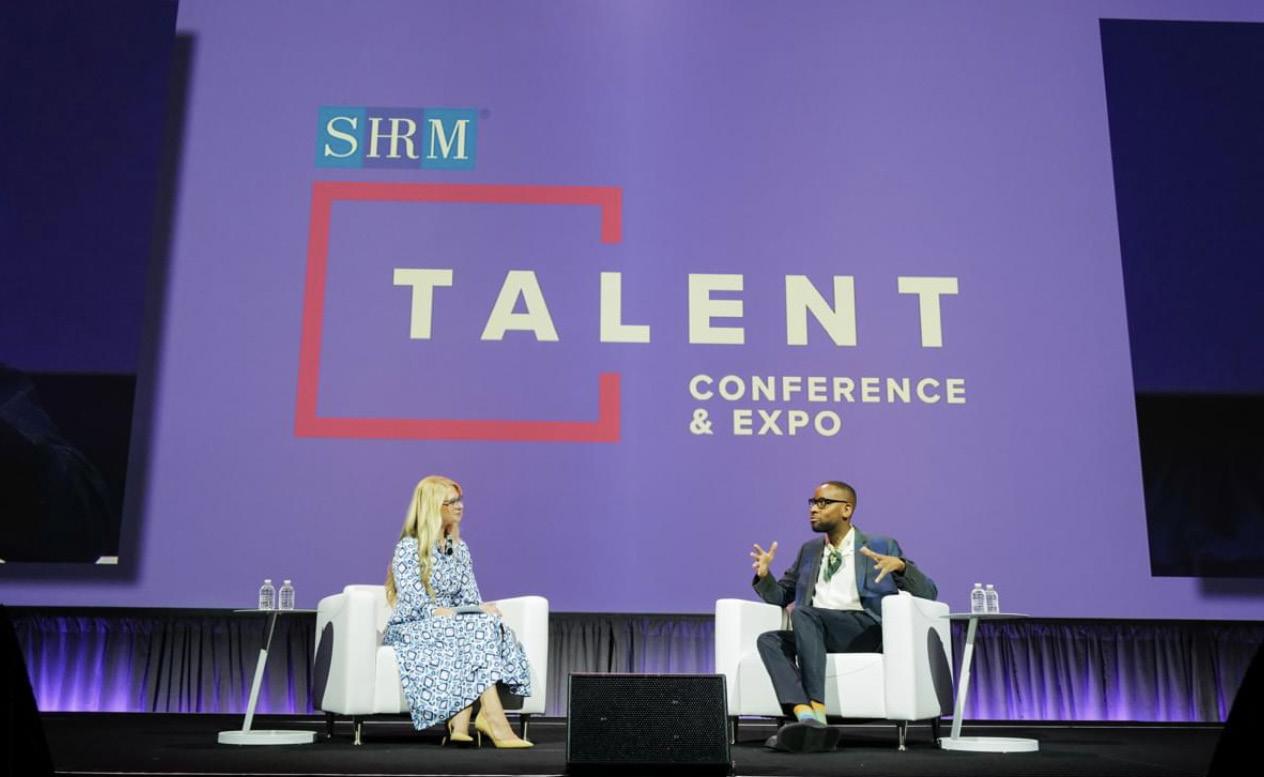


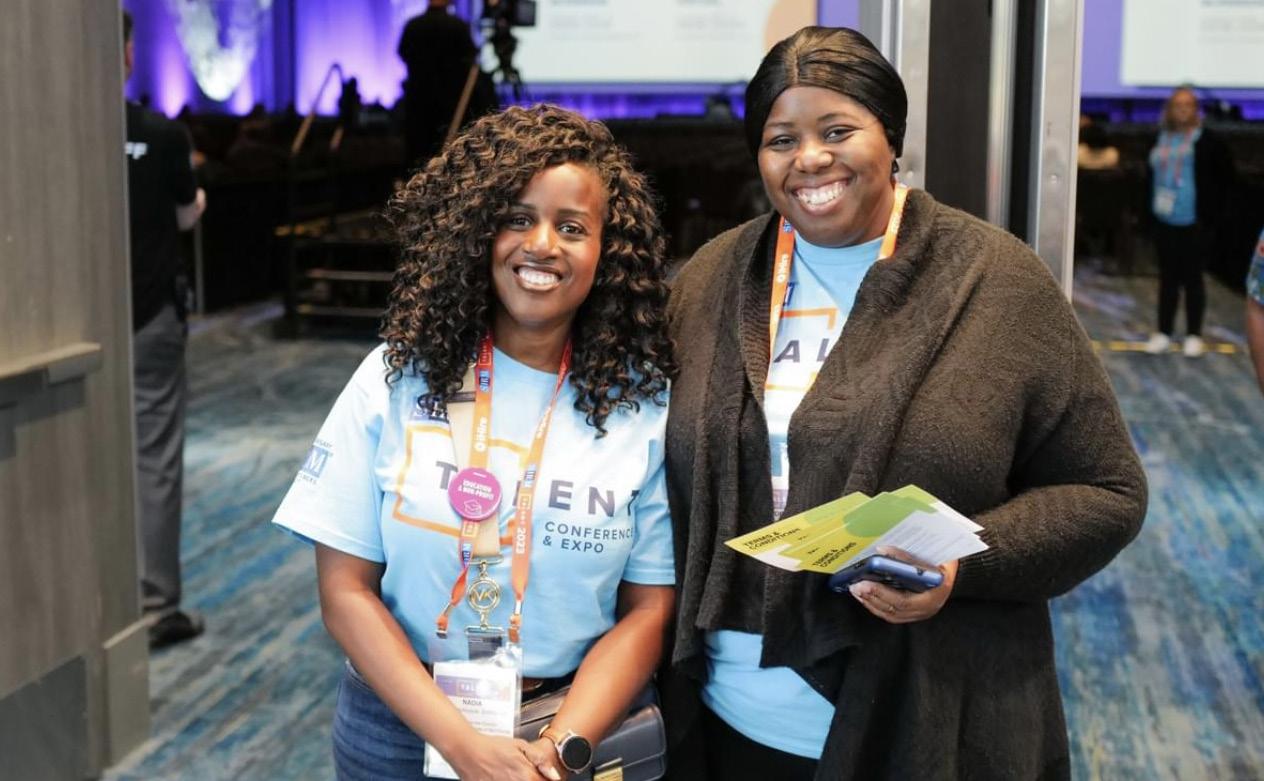




THE WORLD OF IS CONSTANTLY
29 www.HRProfessionalsMagazine.com
HO CHANGING

ALL
you have the tools you need to be successful in the ever-changing world of work?
LEADERS, CHANGEMAKERS & VISIONARIES: REGISTER TODAY AT SHRM.ORG/HRP-APRIL
CALLING
Do
HR
SHRM ANNUAL CONFERENCE & EXPO (SHRM23)

YOUR ONE-STOP SHOP FOR
DRIVING CHANGE WHILE FUTURE-PROOFING YOUR WORKPLACE & ACCELERATING YOUR HR CAREER. HIT
∙ 4 exhilarating days
∙ 11 timely topic tracks
∙ 300+ educational sessions
∙ 275+ expert speakers
∙ Up to 28 PDCs
THE LEARNING JACKPOT AT SHRM23 WITH
2022 Annual EEOC Performance Report
By G. GERARD JABALEY*
The Equal Employment Opportunity Commission (“EEOC”) recently released its 2022 Annual Performance Report. A few statistics are attention worthy, as employers of all varieties grapple with how to recruit, onboard, and retain talent in a fluid and unpredictable economy (in which there are roughly 11 million unfilled jobs).

From Fiscal Year 2016 through 2021, the total number of charges filed has steadily decreased from 91,503 (2016) to 61,331 (2021). However, in FY 2022, the total number of charges filed increased to 73,485 –almost a 20% increase. Additionally, the EEOC collected more than $513 million in monetary benefits for “victims of discrimination,” as compared to roughly $484 million in FY 2021 – almost a $30 million increase. Employers should take note of these two upward trends, as it indicates both that more applicants, employees, and former employees are pursuing charges against employers and that the EEOC is vigorously pursuing monetary resolutions (in addition to other non-monetary compliance). Employers should anticipate this upward trend to continue for the duration of the Biden Administration.
In its March 23, 2023, press release, the EEOC states that during FY 2022 it focused on several issues, including “systemic discrimination, advancing racial justice in the workplace, enforcing pay equity, and addressing the use of artificial intelligence in employment decisions.” For those who work with and monitor the EEOC, systemic discrimination claims have been an enforcement focus point for at least the last decade. The relevant issue is the vigor with which the EEOC pursues same. It is no surprise that with President Biden at the helm, the EEOC is empowered and motivated to use systemic discrimination investigations to make examples of employers who intentionally discriminate against groups of employees based on their protected status.
The second focus point (advancing racial justice) uses terminology that has recently become popular in America, and which aligns with the EEOC’s corresponding focus on “diversity, equity, inclusion, and accessibility”. While the EEOC does not specifically define their interpretation of “advancing racial justice”, the examples provided in the Annual Report reflect the type of race harassment and discrimination matters that human resources professionals and employment law practitioners have seen and contended with for decades. The unresolved issue is to what extent and how the EEOC intends to pursue “racial justice” and DEI narratives in its outreach and enforcement initiatives. It will be very interesting to see whether the EEOC intends to focus on its long-standing pursuit of “equality of opportunity” or shift to a path geared toward “equality of outcome”, which is one that can result in discrimination as well.
The third focus point, pay equity, is another longstanding enforcement initiative. While most public discussion focuses on big picture pay data points, those that have studied the issue in detail know that it is far more complicated and less obvious than the narrative that is generally conveyed to the public. Nonetheless, employers are well advised to ensure that they periodically audit their pay practices and pay ranges to ensure they are not inadvertently discriminating against any group of employees in the process. This is especially true given the recent pay rate increases caused by the significant increase in inflation in the past 12-18 months, which in many situations has distorted pay ranges between new employees and more tenured employees.
The last focus point, the use of artificial intelligence, is truly an issue on the new frontier. Employers are rapidly leveraging technology to drive efficiency at all levels, including hiring, evaluating employee performance, and many operational metrics. While this article is not intended to provide an in-depth analysis of this issue, suffice it to say that when implementing AI software that is involved in making valuebased decisions about applicants and employees, employers need to institute sufficient quality control oversight functions to help mitigate the potential risk such AI platforms bring to the equation.

For those who closely follow EEOC charge statistics, the primary liability exposure issues remain steady. Employers need to appropriately focus on who is an employee, as opposed to an independent contractor, which is unfortunately something of a moving target these days. Employers also need to focus on mitigating liability exposure based on retaliation, disability discrimination, and harassment claims (primarily based on sex and race, but also disability, national origin, and religion). Those three issues easily constitute the most numerous and problematic EEOC charges employers are likely to encounter.
We are experiencing an unpredictable and difficult economic situation, as well as a highly polarized political situation with another presidential election looming, both of which impact our workplaces and inevitably affect recruitment, retention, and liability exposure. Focusing on the essentials of how to appropriately hire, onboard, coach/counsel, discipline, terminate, and accommodate (disability and religion) are your best defenses in today’s employment law world.
*Contributing author, Fred R. Bissinger
G. Gerard Jabaley, Member Wimberly Lawson Wright Daves & Jones PLLC Knoxville, Tennessee office gjabaley@wimberlylawson.com

32 www.HRProfessionalsMagazine.com
SOLVING PROBLEMS FOR BUSINESSES AND EMPLOYERS
The focus of our practice at Wimberly Lawson Wright Daves & Jones, PLLC is primarily on Labor & Employment law and Workers’ Compensation, together with General Liability defense, for businesses and professionals, insurers, and governmental entities. We have offices in Knoxville, Cookeville, and Nashville, Tennessee, and serve clients both nationally and internationally. Our attorneys use a number of preventive and cost-effective methods to maximize employee benefit dollars as well as avoid costly legal problems. We also present educational seminars on a wide variety of topics, including critical issues for employers regarding the current COVID-19 situation. The Firm has been recognized for various coveted rating awards including:


• U.S. Top Ranked Law Firms by Fortune Magazine;
• Best Law Firms by U.S. News & World Report; and
• Martindale Hubbell Peer Review Rated Award by Martindale-Hubbell.
For more information or to sign up for our free newsletter, please visit us at www.wimberlylawson.com
Knoxville Cookeville Nashville 931-372-9123 615-727-1000 865-546-1000
The Benefits of Direct Primary Care for Employers
Perhaps you’ve heard of Direct Primary Care. You have wondered what it is and contemplated if you should research it for your organization. What are the benefits, and what are the drawbacks? In this brief article, I hope to provide some better insight as well as tell you about a new hybrid that we have had our eyes on. Ready? Let’s go!
Having a primary care physician is one of the most important things an individual can do for their health, as it helps ensure they receive regular check-ups, aids in preventive care and allows for intervention before more intensive treatment is required. However, according to a recent study by nonprofit organization Kaiser Family Foundation, 17% of women and 28% of men in the United States don’t have a primary care physician. Compounding concerns, there is a scarcity of primary care physicians across many regions of the country, which the Association of American Medical Colleges expects to worsen by 2025.
Many employers recognize the value of primary care for their workers and, therefore, have adopted direct primary care (DPC) arrangements to increase employee access to such care. In addition to improving primary care access, DPC enables employers to manage their rising health care costs without shifting these expenses onto employees, all while ensuring high-quality care.
What Is DPC?
DPC is an alternative health care payment model to traditional fee-for-service insurance that’s intended to improve health care affordability and access to primary care for a flat fee. This has mainly been a strategy for self-insured health plans. But don’t stop reading just yet. You don’t have to be self-insured to enjoy the benefits of a DPC model (see the last paragraph).
Typically, under a DPC model, employers pay fixed monthly membership fees for their employees, which are typically less expensive than most health plans’ monthly premiums. These fees
generally cover all primary care costs for employees. As a result, DPC is often more affordable and cost-effective than other forms of health insurance, such as preferred provider organization plans.
Under DPC arrangements, employers typically have no direct relationship with the health care system, meaning there is no thirdparty billing or fee-for-service payments. Instead, these arrangements center around the relationship between employees and their health care providers, eliminating the need for insurance companies to act as intermediaries to approve procedures and medications. This allows health care providers to have more leeway in determining treatment options for patients, allowing doctors to deliver the attention and care they believe patients need. While DPC arrangements often complement existing group health plans, employers should note that some variations of these arrangements may still require providers to bill through insurance plans and exclude certain primary care services from coverage, including prescription drugs.
What Are the Benefits of DPC?
Employers can consider the following benefits when evaluating whether to adopt DPC arrangements:
Reduced Health Care Costs
DPC arrangements can help employers reduce their health care costs. Instead of paying for each service provided over the course of a year, employers pay a flat fee per employee. Additionally, DPC membership fees are generally much less expensive than typical health insurance premiums. And because employers do not have a direct relationship with the health care system under DPC arrangements, health care claims are usually easier to manage, which can help minimize administrative costs.
Strengthened Attraction and Retention Efforts
DPC is an attractive benefit for employees because it improves their access to health care and, in many instances, it costs them nothing to visit their primary care doctors. What’s more, the improved access and extra time employees have with their physicians can allow them to build strong, trusting relationships with

Benefits Insights Brought to you by the insurance professionals at The Benefits Group 34 www.HRProfessionalsMagazine.com
these doctors, which can ultimately improve their long-term health. As such, by offering DPC arrangements, employers can demonstrate their commitment to employee well-being and bolster attraction and retention efforts. These arrangements are also often more affordable than traditional fee-for-service insurance.
Therefore, allowing smaller employers who otherwise may not be able to afford to offer health insurance to do so.
Improved Employee Productivity and Wellness

Employees typically have improved access to primary care physicians under DPC arrangements, reducing the amount of time they spend away from work to receive treatment. In addition to offering virtual or telemedicine services, DPC arrangements generally permit employees to visit their doctors the same or next day when issues arise.
DPC physicians also typically offer longer office hours than other physicians, allowing employees to visit doctors after their normal work hours. Additionally, many DPC locations are located near worksites, directly on-site or at shared multi- employer clinics, thus preventing employees from having to miss work or spend excess time traveling to see their doctors.
The average patient spends 121 minutes at each doctor visit, according to research from the American Journal on Managed Care. Of that time, the patient spends 37 minutes traveling and 87 minutes at the clinic. When at the clinic, the patient only spends between 8 and 12 minutes with a doctor. This means that the average patient spends less than 10% of the total time they invest to see their physician receiving care.
Fortunately, DPC arrangements provide on-demand services, which means employees spend less time waiting—and, in turn, less time away from work—when they need to see their physicians. By decreasing waiting periods and increasing time spent with physicians, DPC arrangements can encourage employees to see their doctors when needed, addressing health issues and concerns as they arise instead of waiting until they potentially develop into bigger problems. This can help keep employees healthier and more productive.
Further, most DPC providers have significantly fewer patients than other physicians; in many cases, they have less than half the average number of doctors. These smaller patient pools allow physicians to spend more time with their patients, enabling them to unearth possible health issues before they become chronic or catastrophic. Subsequently, patients are less likely to require emergency room or urgent care visits and specialist services. With more time, doctors can better coordinate care and advocate for patients when referring them to outside providers as well.
What are the drawbacks?
While DPC offers many benefits, there are certain concerns employers should consider when evaluating whether to offer these arrangements. Since DPC only covers primary care services, employers will likely still need to provide employees with additional health insurance to cover specialists, hospitalizations, and other health-related emergencies. While DPC arrangements are generally compatible with employers’ group health plans, there are some limitations. For example, DPC plans that cover all primary care costs among employees aren’t compatible with health savings account-eligible high deductible health plans. Further, these plans don’t accept Medicare, Medicaid, and other government funds, making them exempt from cost and quality regulations.
DPC is often a location-specific solution. As a result, offering DPC arrangements can be challenging for employers with workforces located in different cities and states. This also makes it more difficult for employees to locate providers. In addition, DPC can hamper an employer’s ability to access medical claims data, potentially limiting their ability to help employees make informed health care decisions.
Here is the ‘drop the mic’ part . .
What if we were able to offer all the benefits of the DPC model: lower premiums, lower deductibles, better relationships, AND the benefits of the traditional PPO model: more locations, ease of billing, traditional plan designs with deductibles and copays? WE ARE ABLE. In many states, and growing, we have partnered with today’s health marketplace thought leaders who develop solutions that include access to a local hospital system and providers at one low deductible (say $500) and then a back-up insurer for those times when you receive service outside of your local/community hospital network at a little higher deductible (say $2000). So, you have amazing coverage that combines the best of both worlds and is often offered at a price much lower than your ‘off-the-shelf’ PPO product.
Want to learn more? Reach out to us at 615-250-3334 or email will@benefits.place.com
35 www.HRProfessionalsMagazine.com
Every HR professional is familiar with creating growth opportunities for employees. Mentoring, leadership development, tuition reimbursement and project-based learning are a few examples of ways that employers help employees advance in their careers. But what about HR? What contributes to your own professional growth and development?
This issue weighs heavily at HRCI. It’s why we commissioned a thirdparty research firm to survey HR professionals about how certifications support their career growth and whether they prepare them to lead their organizations. The research firm received 2,536 completed responses from HR professionals across various employment types, titles, educational backgrounds, and industries. Ninety-three percent of the respondents are employed full-time in an HR position and 31 percent hold manager titles.
What did we learn? I’ll fast-forward to the end result: 79 percent who added HRCI credentials after their name received the opportunity to pursue challenging assignments and jobs. Eighty-two percent said their HRCI certifications allowed them to engage in assignments that required new knowledge and skills. Delivering a competitive edge for HR leadership roles, complementing an existing or in-progress formal education, forging a path forward to higher pay, and greater career growth and satisfaction topped the list of key benefits provided by HRCI certification.
Why is all of this so important? The accelerated and unpredictable pace of work has created unprecedented change. As we strive to rebalance and recalibrate what work looks like moving forward, HR professionals are pressured to contribute to business outcomes through more strategic workforce programs and management.
Among the many changes are the increase in remote workers and corresponding requirements for virtual collaboration and engagement. Also taking center-stage are skills-based hiring, data-driven talent planning, and new employee benefits such as menopause support. Technology is yet another force to reckon: artificial intelligence is creating new jobs, with recent count 1of 77,000+ open in the U.S. according to LinkedIn. Top specialized skills that employers are hiring for include Figma and Jira Align2 – terms that were unfamiliar a few short years ago. “Digital nomads” – the trend of working remotely from anywhere in the world – is no longer a unique phenomenon. In fact, the number of these workers has significantly increased, having gone from 3.2 million in 2019 to 11.1 million in 2022 according to recent research
Our research underscored that HRCI certification is a strong indicator that an HR professional has both the competence and confidence to navigate the toughest business challenges. Certification can also be a conduit for historically underrepresented groups to improve their earnings and access to professional opportunities. A means to higher

The Value of Certifications
By AMY SCHABACKER DUFRANE
pay, our research showed a correlation between higher earning potential and opportunities for promotion with many HRCI certified professionals receiving salary increases after achieving certification. Sixty-five percent of respondents said that HR certification is preferred at their organization, as it signals that a candidate is dedicated to the profession. In select industries, the research pointed to high rates of preference. The mining, healthcare and chemical industries (75 percent, 72 percent and 71 percent respectively) said HR certification was preferred for some or all HR positions.
It’s hard to argue with such compelling data. Having achieved their HRCI certification, 77 percent of respondents were satisfied or extremely satisfied with their progress towards meeting personal skill development goals. A marker of progress and potential in the field, HRCI certification validates the ability to apply strategic HR concepts to support the organization.
Changes in work will only continue to increase the demand for HR expertise. Ensuring that you stay up to date on human capital trends means even in a climate of unrelenting change and disruption, you will become more confident in your ability to solve problems and anticipate your workforce’s needs. Honored to support your ongoing success, we’re here at your service.
Did you know? The American National Standards Institute (ANSI) has appointed HRCI as the International Secretariat for the International Organization for Standardization (ISO) Technical Committee (TC) 260 on Human Resource Management. The leadership of Global Standards under the ISO umbrella allows HRCI to continue to serve its HR professionals and organizations as they continue toward excellence in HR Management.
To learn how you can earn your individual certification, please visit www.hrci.org. To become a preferred employer through organizational-level certification, please visit www.hrsi.org.
1 Retrieved April 1, 2023:
https://www.linkedin.com/jobs/artificial-intelligence-jobs/?currentJobId=3503845294
2 Lightcast 2023 Global Talent Playbook
Amy Schabacker Dufrane, Ed.D., SPHR, CAE, is CEO of HRCI® — HR Certification Institute, and is the founder and CEO of HRSI — HR Standards Institute, where she is responsible for driving and disrupting the conversations about building high-performing, strategic HR teams. An engaging thought leader at the intersection of talent strategy and continuous learning, Dr. Dufrane is an award-winning leader and celebrated keynote speaker on the human side of successful business strategy in the 21st century.

36 www.HRProfessionalsMagazine.com
CERTIFICATE IN DIVERSITY AND INCLUSION IN HR MANAGEMENT

The three courses comprising our certificate were developed in accordance with the International Organization for Standardization’s guidance on diversity and inclusion for organizations (ISO 30415:2021).
• Fostering an Inclusive Culture
• Assessing Diversity and Inclusion
•
and Retaining
including
Save 20% on HRCI® Courses in 2023
your
at checkout. HRCI’s learning catalog features 250+ courses and certificates. This offer will expire on May 31, 2023 at 11:59 pm ET and cannot be combined with any other promotions. 37 www.HRProfessionalsMagazine.com
Hiring
Diverse Talent Earn 12 general HR credits towards any of HRCI’s eight credentials,
SPHR® and PHR® . Visit learn.hrci.org and use code HRMAG23 to claim
discount
MMAGI & McGriff present
Thursday, June 8, 2023

Disruption Matinee-Style – Don’t Miss It – Register Below!



DisruptHR is a movement designed to energize, inform, and empower anyone who is passionate about people and the world of work (not just HR)



Hear from a line-up of 10 cutting-edge speakers, at a “not-so-normal-venue”, sharing their unique perspectives - 5 minutes each, with 20 slides that auto-rotate every 15 seconds
WOW! Get ready to be moved and learn something quick!
Sneak peek at some of the topics!

“The Executive Function”
“Hey! What About Me?”

“Leadership in Jeopardy! From a Jeopardy! Champ”
“One Workplace Myth that Needs to Die”
“Ready, Set, GOLD by a 2x Olympic Gold & Silver Medalist”

“Happy Pride Month: a brief history of the Alphabet Mafia”
“Two Truths, A Lie, and Trust”
The first 50 registrants who purchase a ticket and attend the event receive an autographed book, 10 Leadership Virtues for Disruptive Times by Tom Ziglar, proud son of Zig Ziglar!
5853 Ridgeway Ctr Pkwy, Memphis, TN 2:00pm to 4:30pm
GET YOUR TICKET HERE 38 www.HRProfessionalsMagazine.com
Malco Ridgeway Cinema Grill
Keynote Presenters



Join us in Chattanooga
September 20-22, 2023
Cultivate your personal and professional leadership development through a wide variety of learning opportunities designed to help you effectively navigate the ever-changing world of HR. Make your investment of time in attending the conference count even more by earning continuing education credits.

Come be encouraged and equipped to lead more effectively in your organization.
Register by August 31and save $100*
Reserve your room at the Conference Hotel before they're gone!


*Compared to late registration rate
 RANDY BOYD President University of Tennessee
DEREK YOUNG Author and Speaker
DICK FINNEGAN Author and Speaker
JESSICA STOLLINGS-HOLDER Author and Speaker
RANDY BOYD President University of Tennessee
DEREK YOUNG Author and Speaker
DICK FINNEGAN Author and Speaker
JESSICA STOLLINGS-HOLDER Author and Speaker
HIGHLIGHTS
Little Rock, April 13-14



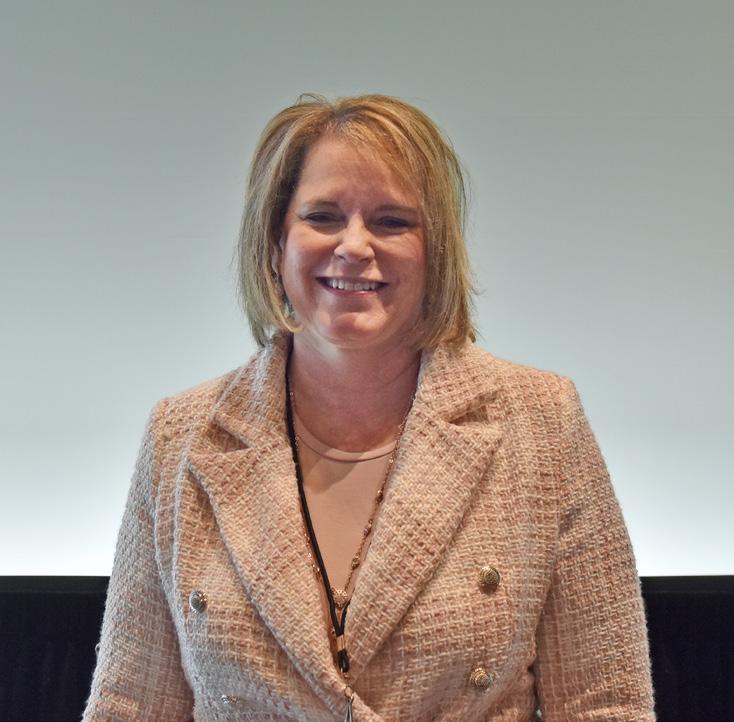

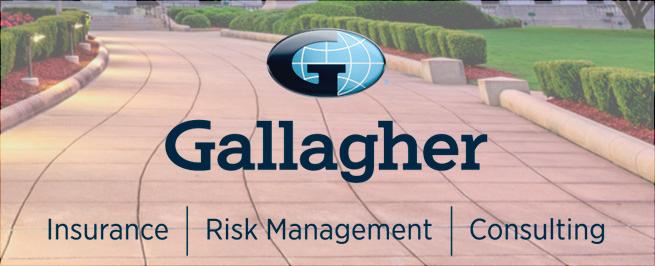
 1 Amy Fisher, MBA, SHRM-SCP, SPHR, was the Chair of the ARSHRM ELLA Conference.
2 Jim Banks, General Counsel at SHRM, and Judith Tavano, MA, SHRM-SCP, presented “Employment Law and Legislative Update: What to Expect in 2023 and Beyond.”
1 Amy Fisher, MBA, SHRM-SCP, SPHR, was the Chair of the ARSHRM ELLA Conference.
2 Jim Banks, General Counsel at SHRM, and Judith Tavano, MA, SHRM-SCP, presented “Employment Law and Legislative Update: What to Expect in 2023 and Beyond.”
1 2 3 4 40 www.HRProfessionalsMagazine.com
3 Tim Orellano, PHR, was the recipient of the Russell Gunter Legislative Award. Anna Beth Gorman was the recipient of the Friend of HR Award. 4 The 2023 ARSHRM ELLA Conference Committee







 5 Kristen Rhodes-Berry, presented an update from the Arkansas Department of Workforce Services. 6 A mock trial, “You Be the Jury: ELLA Goes to Court,” included David Burney, Broderick Daniels, Cindy Kolb, Greg Northen, Thomas Dunlap, Patti Airoldi, Sheila Moss, and Wayne Young. 7 “A Courtside Analysis” was presented by Greg Northen, Cindy Kolb, Wayne Young, and Dan Herrington. 8 Sheila Moss, ARSHRM Workforce Readiness Director, introduced the mock trial. 9 Daveante Jones presented “How to Avoid Losing Your Remote… Workforce.” 10 Edmond Sims, Jr., with the Memphis District of the EEOC presented an update.
5 Kristen Rhodes-Berry, presented an update from the Arkansas Department of Workforce Services. 6 A mock trial, “You Be the Jury: ELLA Goes to Court,” included David Burney, Broderick Daniels, Cindy Kolb, Greg Northen, Thomas Dunlap, Patti Airoldi, Sheila Moss, and Wayne Young. 7 “A Courtside Analysis” was presented by Greg Northen, Cindy Kolb, Wayne Young, and Dan Herrington. 8 Sheila Moss, ARSHRM Workforce Readiness Director, introduced the mock trial. 9 Daveante Jones presented “How to Avoid Losing Your Remote… Workforce.” 10 Edmond Sims, Jr., with the Memphis District of the EEOC presented an update.
5 6 7 8 9 10 11 12 41 www.HRProfessionalsMagazine.com
11 Dan Herrington’s topic was “Deposition Preparedness… What Could Possibly Go Wrong? 12 The Happy Hour Reception at the Doubletree Hotel
Attention HR Professionals and Business Owners!
The Northwest Arkansas Human Resources Association, Inc (NOARK) invites you to participate in our 33rd annual Wage & Benefits survey. It is the quintessential survey that compiles information on employee compensation for 175+ job descriptions and benefits data creating a comprehensive overview of total rewards in the state of Arkansas.



Your participation in this survey is invaluable to providing accurate and useful decision-making data for businesses and human resource professionals alike. By sharing your company’s compensation and benefits data, you contribute to a more informed and equitable job market.
Survey participation is free and easy to complete. All data collected is kept strictly confidential and only reported in the aggregate. As a participant, you can purchase the final report
2 0 2 3
at a discounted price, gaining insights into industry trends and benchmark data for your company’s compensation strategy.
To participate, click on the link below and follow the instructions provided. Data submission is accepted from April 26, 2023, through May 23, 2023. Purchased survey results will be available in July 2023.
We appreciate your participation and support!
Link to survey:
https://www.ussalarysurvey.com/noark/addnewuser.php
Sincerely, Northwest Arkansas Human Resources Association, Inc.
Wage & Benefits Survey
Participation Timeline April 26 - May 23, 2023
Participation Timeline April 26 - May 23, 2023
Participation is free and easy! NOARK.ORG Sponsored by
2 0 2 3
The 33rd annual Wage & Benefits Survey focuses on total rewards in Arkansas.
Participation is free and easy! NOARK.ORG Sponsored by
Bordering States/Cities are encouraged to participate.
The 33rd annual Wage & Benefits Survey focuses on total rewards in Arkansas.
Representing 175+ jobs from every industy
Bordering States/Cities are encouraged to participate Representin jobs from ev industy
Participant Chapter Members $175 Non-Participant Members $325 Non-Participant, Non-Member $485 Purchase results by contacting info@noark.org
Participant Chapter Members Non-Participant Members $32 Non-Participant, Non-Membe Purchase results by contacting info@noark.org

Wage & Benefits Survey
42 www.HRProfessionalsMagazine.com
The job market is hot... But so is inflation.
TIME TO INCREASE YOUR EARNING POTENTIAL
COMPLETE YOUR HR MASTER’S DEGREE ONLINE

Illinois’ accredited and internationally-recognized master’s program is available online, tailored to the needs of working professionals. Whether you have prior experience in human resources or you are transitioning from another function, you will find immediate applicability to your work. The MHRIR curriculum is taught by experienced faculty and industry experts and designed to build business acumen and a strong foundation in the field.
Students have an average of eight years of experience in HR or a related business function, and benefit from peer networking in selective classes. The student body includes a diverse and experienced group of working professionals from long-standing corporate partners like bp and PepsiCo, in addition to professionals in non-profit and consulting.
Beyond the classroom, students build their networks and participate in an active community of practitioners. Seventy-three percent of students are promoted while still in the program or within six months of graduation.
For more information, visit go.illinois.edu/LER_Online.
BOOST YOUR PROFESSIONAL KNOWLEDGE
The School now offers a certificate program geared towards professionals who want to freshen their HR knowledge, or for those with little HR background who wish to build competency. The program has four tracks: Fundamentals of Human Resources, Human Resources Management, Compensation Best Practices, and HR Data Analytics. Each track has three courses (12 credit hours total, four credit hours per course), and can be completed in 7-10 months. Candidates that complete one or more certificates can count their certificate credit towards our full master’s program if they wish to continue their journey.
Full information about the certificate options is available at go.illinois.edu/LERCertificate.
For any questions about our online offerings, email Eden Haycraft, Associate Director, Graduate Online Programs at ehaycra@illinois.edu.
43 www.HRProfessionalsMagazine.com
On average, students receive a $20k salary increase after completing the program.






1 2 3 4 5 44 www.HRProfessionalsMagazine.com
Highlights
1 The SHRM-Memphis Legal Conference Committee included (L-R) Cindy Ettiingolf, Memphis Area Legal Services; Stephanie Hendrix, VP Programs; Kathy Tuberville, Conference Chair; David Dufour, President; and Jeff Weintraub, Fisher Phillips. 2 Judge Magistrate, Judge Tu M. Pham, United States District Court for the Western District of Tennessee, was the keynote presenter speaking on “DEI and the Legal Community – Where We Go from Here.” 3 “The New OSHA Challenges – How to Avoid Future OSHA Audits,” was the topic for Ashely Meredith Strittmatter. Baker Donelson. 4 Jeff Weintraub, Fisher Phillips; Maureen Holland, Holland & Associates; Gabe McGaha, FedEx Legal Department; and Frank Day, FordHarrison; discussed “Discrimination, Retaliation, and Harassment Standards.” 5 (L-R) Maureen Holland with Holland and Associates, Dr. Kathy Tuberville, Conference Chair; Stephanie Hendrix, VP Programs; Dr. Deneen Lester with Salvation Army. Maureen Holland and Dr. Deneen Lester were emcees of the morning events. 6 Paul Prather, Senior Partner, Littler PLC, discussed “Rapid Fire Legal Issues-Pump Act, Pregnancy Fairness Act, and Secure Act 2.0.” 7 Kim Hodges, managing partner of Ogletree Deakins, was an emcee. 8 Professor Regina Hillman, University of Memphis Law School; Cindy Ettingoff, Moderator; and Attorney Maureen Holland, Holland & Associates, presented “LGBTQ+Discrimination/Harassment/Transgender Issues/Updates. 9 Alan Crone, The Crone Law Firm; Brian Winfrey, Morgan and Morgan; Tressa Johnson with Johnson Bennett Law Firm provided “Tips from the Plaintiff’s Bar.” Moderator was Rod Holmes, Boyle Brasher, LLC. 10 “Concerted Activity-What You Should Know in Today’s Workplace,” presented by Jeff Weintraub, Fisher Phillips; Tannera Gibson, Burch Porter Johnson; Delaine Smith, International Paper. 11 Lisa Krupicka, Burch Porter Johnson; and David Dufour, SHRM-Memphis President. Lisa presented “Handbook Challenges in a Post-covid Workplace.” 12 Austin Baker, CEO of HRO-Partners, and Kim Hodges, managing partner of Ogletree Deakins, were afternoon emcees of the event.



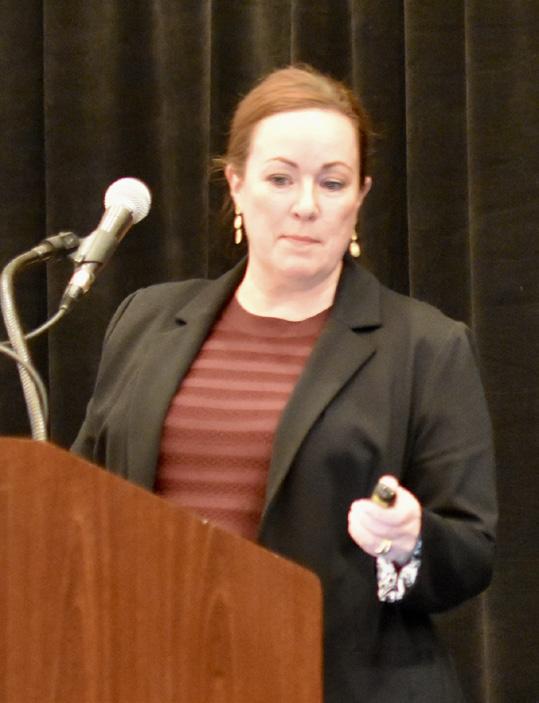



6 7 8 9 10 11 12 45 www.HRProfessionalsMagazine.com
How to Deal with Difficult Emotions at Work
By HARVEY DEUTSCHENDORF
Many organizations now understand the importance of developing a healthy workplace culture and spent a great deal of time, finances, and effort in creating one. The vision of a workplace where everyone is happy, cheerful, and positive at all times can be very tempting and organizations can succumb to these temptations. I’m reminded of a propaganda cartoon created in the Soviet Union during the Stalin era of smiling, happy farm workers gleefully going about their duties. However, it is a view that is not only impossible, but unrealistic and toxic. In my book, The Other Kind of Smart, www.theotherkindofsmart.com I talk about emotions themselves being neutral, neither good nor bad. It’s what we do with them that matters. Being forced to suppress negative emotions in the workplace doesn’t make them go away. Rather it drives them underground, where they fester and grow, making them stronger. Organizations that set up the expectations that negative emotions have no place set themselves up for volatile toxic cultures. While it is no easy task to deal with difficult emotions, organizations must not ignore, or shrink from dealing with them.
Rather than suppressing negative emotions, there are ways that organizations can work towards giving everyone the freedom to express themselves in a way that helps the situation rather than make sit worse.
Instead of seeing negative emotions as a threat, organization should look to all emotions expressed by their people as information on issues that need to be addressed for the health of the organization. By bringing the emotions to the open there is an opportunity to work them out, rather than driving them underground where they can do more damage. Organizations can have people who are trained in active listening. That means listening to someone with strong emotions simply to understand. Most of the time when someone is speaking, we are thinking of a response, instead of simply paying attention to what the other person is saying. Simply being heard will go a long way in helping someone expressing strong emotions release some of the energy that those emotions carry. Not being heard, or being judged for having that emotion, will have the opposite effect and grow that energy. Adi Segal, CEO of Hapi, a digital platform that provides listening certification and Active Listening as a Service (ALaaS), notes that “Adding listening to

Being positive all the time is impossible and toxic.
46 www.HRProfessionalsMagazine.com
the workplace may seem simple, but like any new skill, it requires practice. Leaders must strengthen their listening muscles, just as they would go to the gym. It’s both an art and a science, so teams must intentionally build in the time and space to listen deeply to one another. Ultimately, this will strengthen the company culture and help drive the bottom line.”

When people understand that their negative emotions such as fear, anger or sadness can be openly acknowledged they will develop a sense of psychological safety within the organizations. When acknowledging someone’s tough emotions, it is important not to get defensive or hide behind emails or other technology. The only way to deal with this is person to person.
However, Segal says, “Though human-to-human communication is the only way to resolve conflict, often people hide behind fake positive communication. The pressure to maintain a positive attitude can also lead to a lack of authenticity in the workplace, as employees may feel like they have to put on a facade rather than being their true selves.” He adds, “Ultimately, toxic positivity can create a toxic work environment that can negatively impact an employee’s mental health and work performance. In essence, toxic positivity is the opposite of creating an open listening environment at work.”

If a situation is too volatile and we are uncomfortable, or ready at the moment, it is better to take time away and allow a cooling off period. Allowing that period of separation and the emotions to calm down will lead to a greater chance of the conversation becoming a learning opportunity.
For leaders, dealing with someone’s tough emotions can be one of the most difficult parts of the job. However, if handled well, the person who expressed
these emotions could learn valuable information about themselves and appreciate that someone was there for them to hear them and try to help.
Someone with difficult emotions may be an employee who cares deeply and wants to give his best for the organization. If they are handled well, they may develop a healthy respect for the person who had the courage not to ignore or deny their emotions. This could potentially make them a long term loyal, productive employee.
Harvey Deutschendorf is an emotional intelligence expert, internationally published author and speaker. To take the EI Quiz go to theotherkindofsmart.com. His book THE OTHER KIND OF SMART, Simple Ways to Boost Your Emotional Intelligence for Greater Personal Effectiveness and Success has been published in 4 languages. Harvey writes for FAST COMPANY and has a monthly column with HRPROFESSIONALS MAGAZINE. You can follow him on Twitter @theeiguy.
47 www.HRProfessionalsMagazine.com
WE KNOW THAT THE KEY TO A THRIVING BUSINESS IS A MORE SKILLED, BETTER-PREPARED WORKFORCE.
By partnering with our accredited and flexible nonprofit, online university, you’re giving your employees the real-world skills they need to succeed to take your company higher Since being founded by 19 bipartisan governors in 1997, WGU has been devoted to providing an accessible, high-quality education and has graduated more than 300,000 students. With WGU, you can upskill or reskill your workforce for the changing needs of your business
WHY PARTNER WITH WGU?

• Aligned with your company’s objectives to put your employees on the path to success.
• Experienced advisors are dedicated to finding the right programs for your employees.



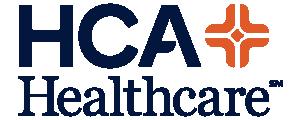
• Scalable, industry-relevant programs that cost about half the national average.*
• Flexible courses that work around your employees’ schedules.
• Dedicated mentors to ensure your employees have the support they need.
• Completion rates that are higher than the national average.
*WGU average annual bachelor’s tuition rates are nearly 40% less than the national average, compared to national rates reported by the Integrated Postsecondary Education Data System. WGU average rate does not include rates for WGU Bachelor of Science, Nursing Prelicensure program.
WGU HAS EXPERIENCE

With over 300 existing partnerships, we’re no stranger to helping employees and employers across multiple industries.
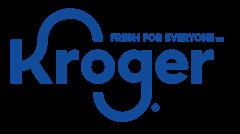
98% of employers said graduates met or exceeded job expectations.*
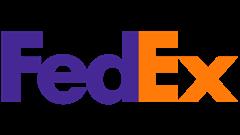
95% of employers said they would hire another WGU graduate.*

ACCREDITATIONS

WGU is regionally accredited, the highest form of accreditation, by the Northwest Commission on Colleges and Universities (NWCCU).

READY TO BECOME A PARTNER? Contact T Tuulllly y L Laalle e (Senior Manager, Regional Strategic Partnerships) at t tuulllly y l laallee@@wwggu u e eddu u or 9 90044--778888--4466777 to find out how high a partnership with WGU can take you.
*2020 Harris Poll of 300 employers of WGU graduates.
Visit WGU at booth 4010 during the SHRM Annual Conference in Las Vegas and learn more about WGU and our new MSHRM launching in November!
wgu.edu/partnerships








































 By JOSELINE CASTAÑOS and ASHLEY DUGGER
By JOSELINE CASTAÑOS and ASHLEY DUGGER
 Dr. Ashley Dugger, SHRM-CP Associate Dean and Director for Human Resource Management Programs ashley.dugger@wgu.edu www.WGU.edu
Dr. Ashley Dugger, SHRM-CP Associate Dean and Director for Human Resource Management Programs ashley.dugger@wgu.edu www.WGU.edu













 By JOHN HAWKINS
By JOHN HAWKINS








 By SHELLY KALRA
By SHELLY KALRA


 By KISHA MOLIERE
By KISHA MOLIERE




 James V. Thompson, Attorney Rainey, Kizer, Reviere & Bell, PLC jthompson@raineykizer.com
James V. Thompson, Attorney Rainey, Kizer, Reviere & Bell, PLC jthompson@raineykizer.com





































 RANDY BOYD President University of Tennessee
DEREK YOUNG Author and Speaker
DICK FINNEGAN Author and Speaker
JESSICA STOLLINGS-HOLDER Author and Speaker
RANDY BOYD President University of Tennessee
DEREK YOUNG Author and Speaker
DICK FINNEGAN Author and Speaker
JESSICA STOLLINGS-HOLDER Author and Speaker






 1 Amy Fisher, MBA, SHRM-SCP, SPHR, was the Chair of the ARSHRM ELLA Conference.
2 Jim Banks, General Counsel at SHRM, and Judith Tavano, MA, SHRM-SCP, presented “Employment Law and Legislative Update: What to Expect in 2023 and Beyond.”
1 Amy Fisher, MBA, SHRM-SCP, SPHR, was the Chair of the ARSHRM ELLA Conference.
2 Jim Banks, General Counsel at SHRM, and Judith Tavano, MA, SHRM-SCP, presented “Employment Law and Legislative Update: What to Expect in 2023 and Beyond.”







 5 Kristen Rhodes-Berry, presented an update from the Arkansas Department of Workforce Services. 6 A mock trial, “You Be the Jury: ELLA Goes to Court,” included David Burney, Broderick Daniels, Cindy Kolb, Greg Northen, Thomas Dunlap, Patti Airoldi, Sheila Moss, and Wayne Young. 7 “A Courtside Analysis” was presented by Greg Northen, Cindy Kolb, Wayne Young, and Dan Herrington. 8 Sheila Moss, ARSHRM Workforce Readiness Director, introduced the mock trial. 9 Daveante Jones presented “How to Avoid Losing Your Remote… Workforce.” 10 Edmond Sims, Jr., with the Memphis District of the EEOC presented an update.
5 Kristen Rhodes-Berry, presented an update from the Arkansas Department of Workforce Services. 6 A mock trial, “You Be the Jury: ELLA Goes to Court,” included David Burney, Broderick Daniels, Cindy Kolb, Greg Northen, Thomas Dunlap, Patti Airoldi, Sheila Moss, and Wayne Young. 7 “A Courtside Analysis” was presented by Greg Northen, Cindy Kolb, Wayne Young, and Dan Herrington. 8 Sheila Moss, ARSHRM Workforce Readiness Director, introduced the mock trial. 9 Daveante Jones presented “How to Avoid Losing Your Remote… Workforce.” 10 Edmond Sims, Jr., with the Memphis District of the EEOC presented an update.































